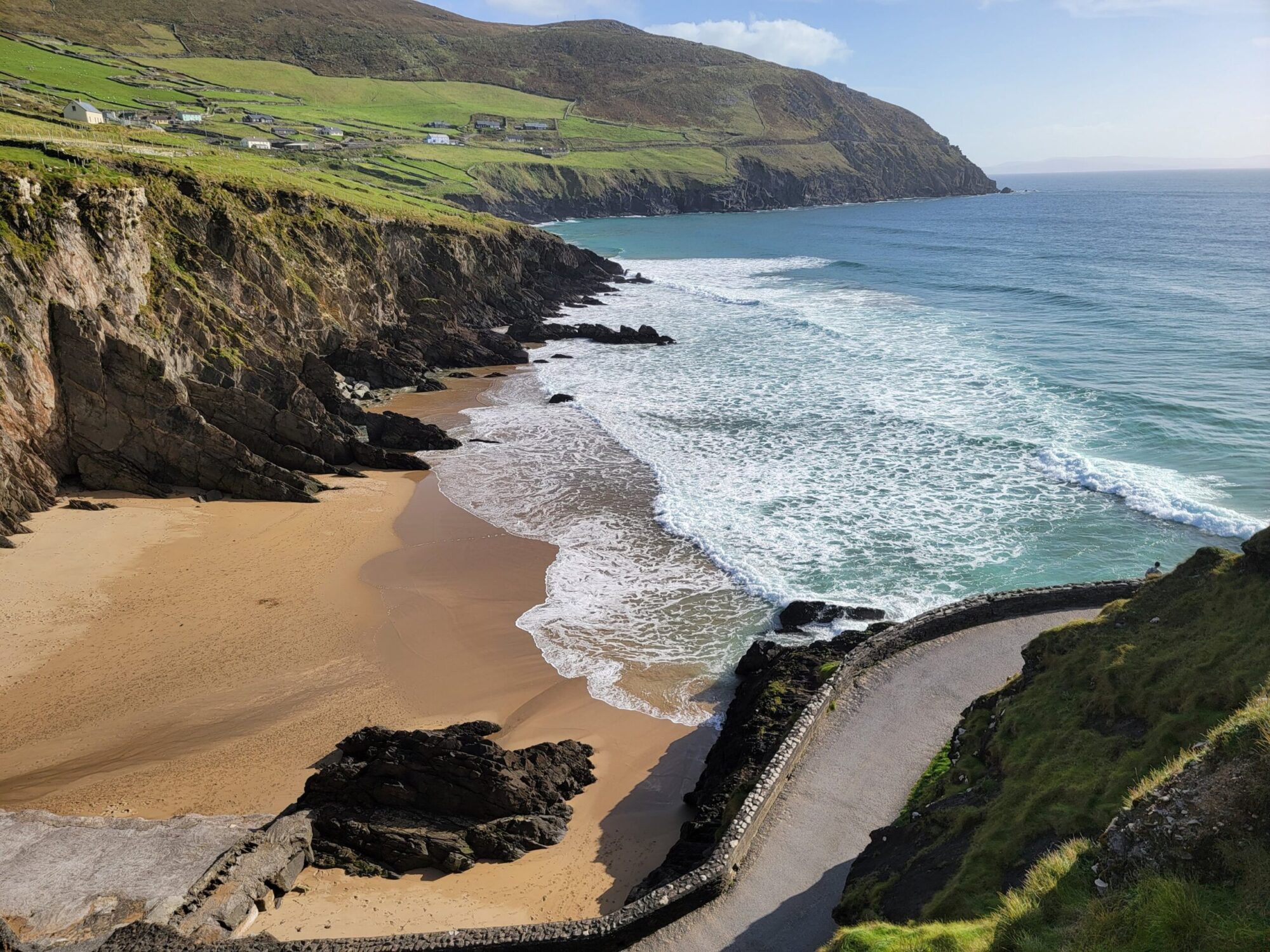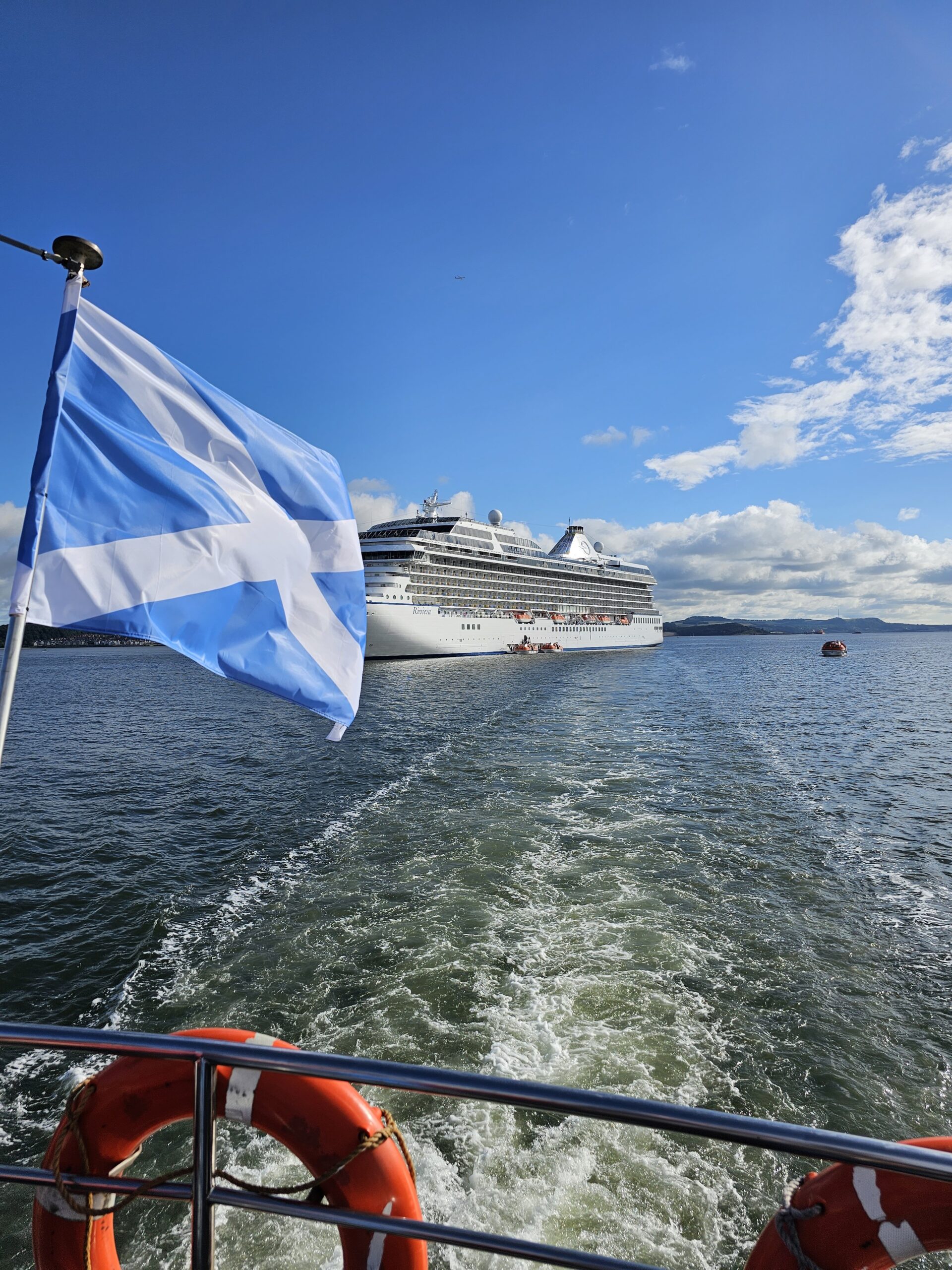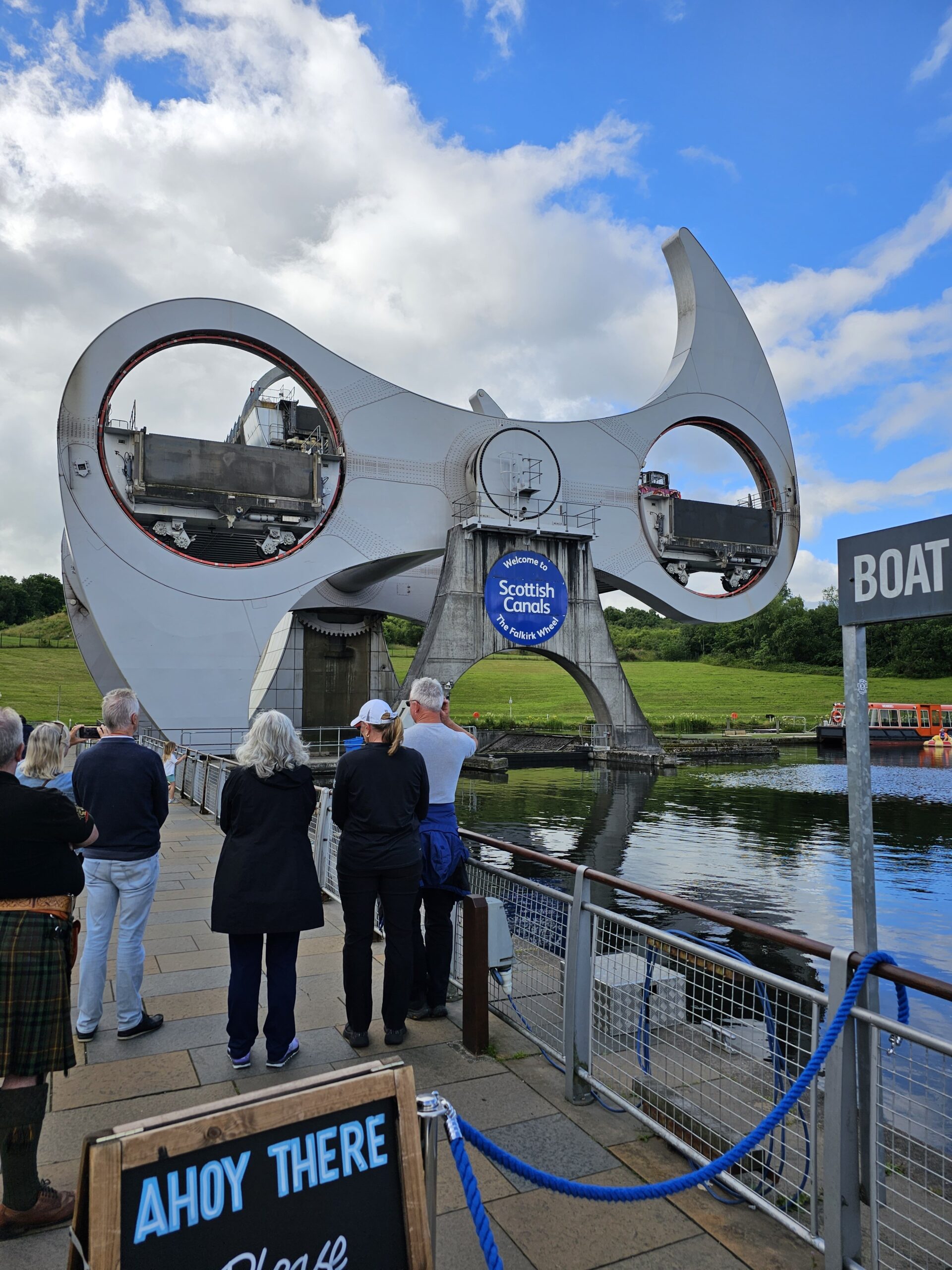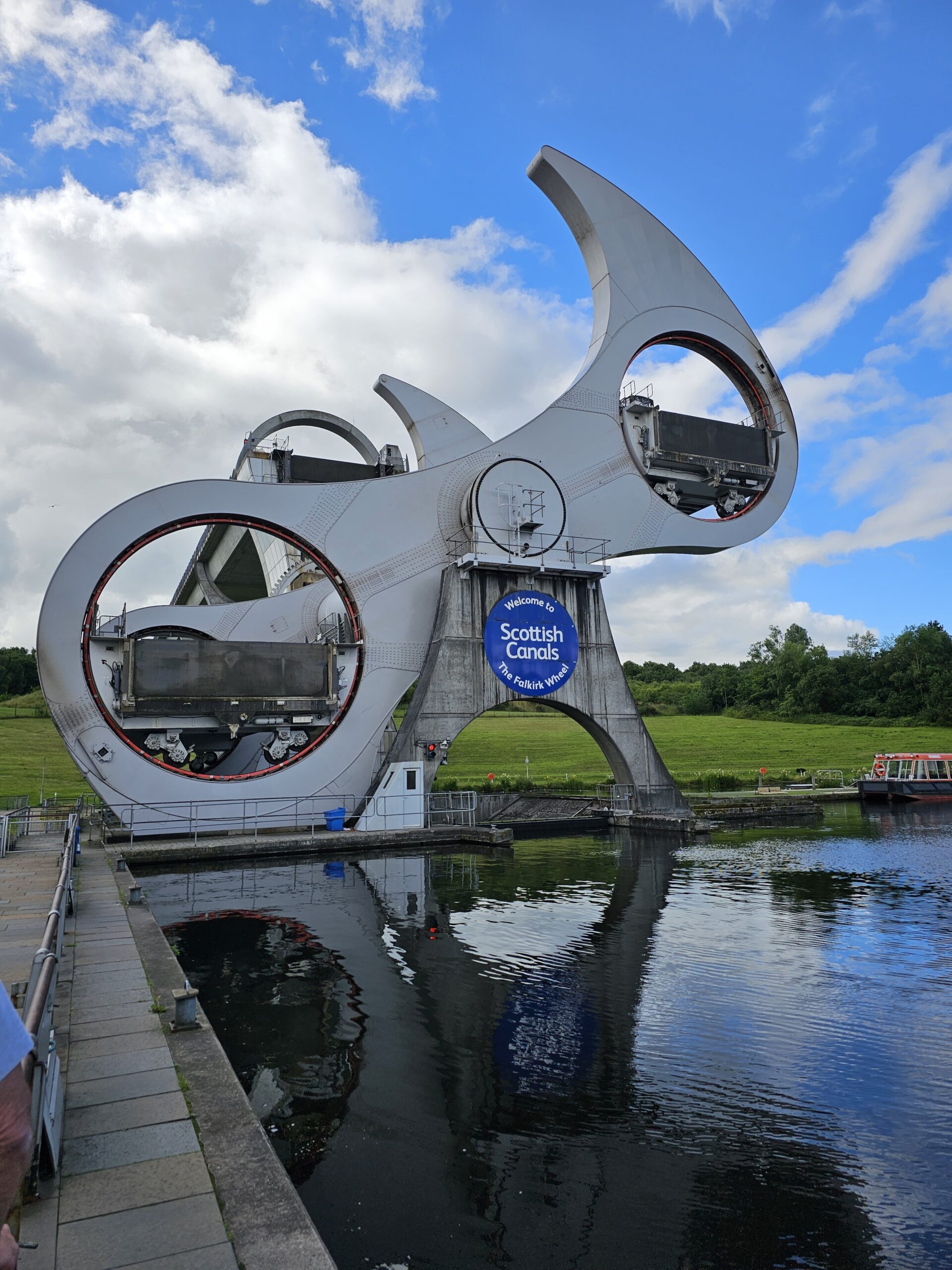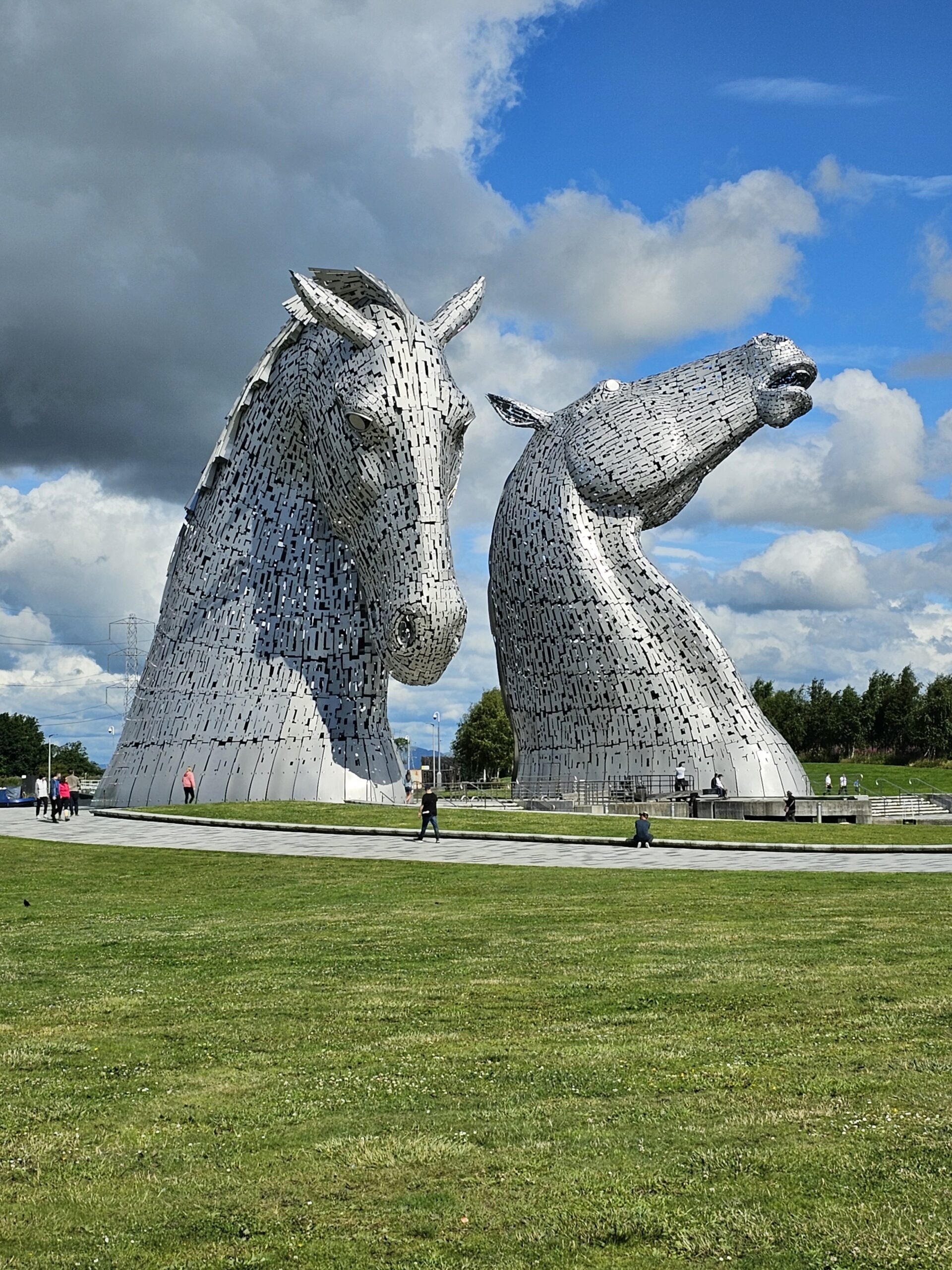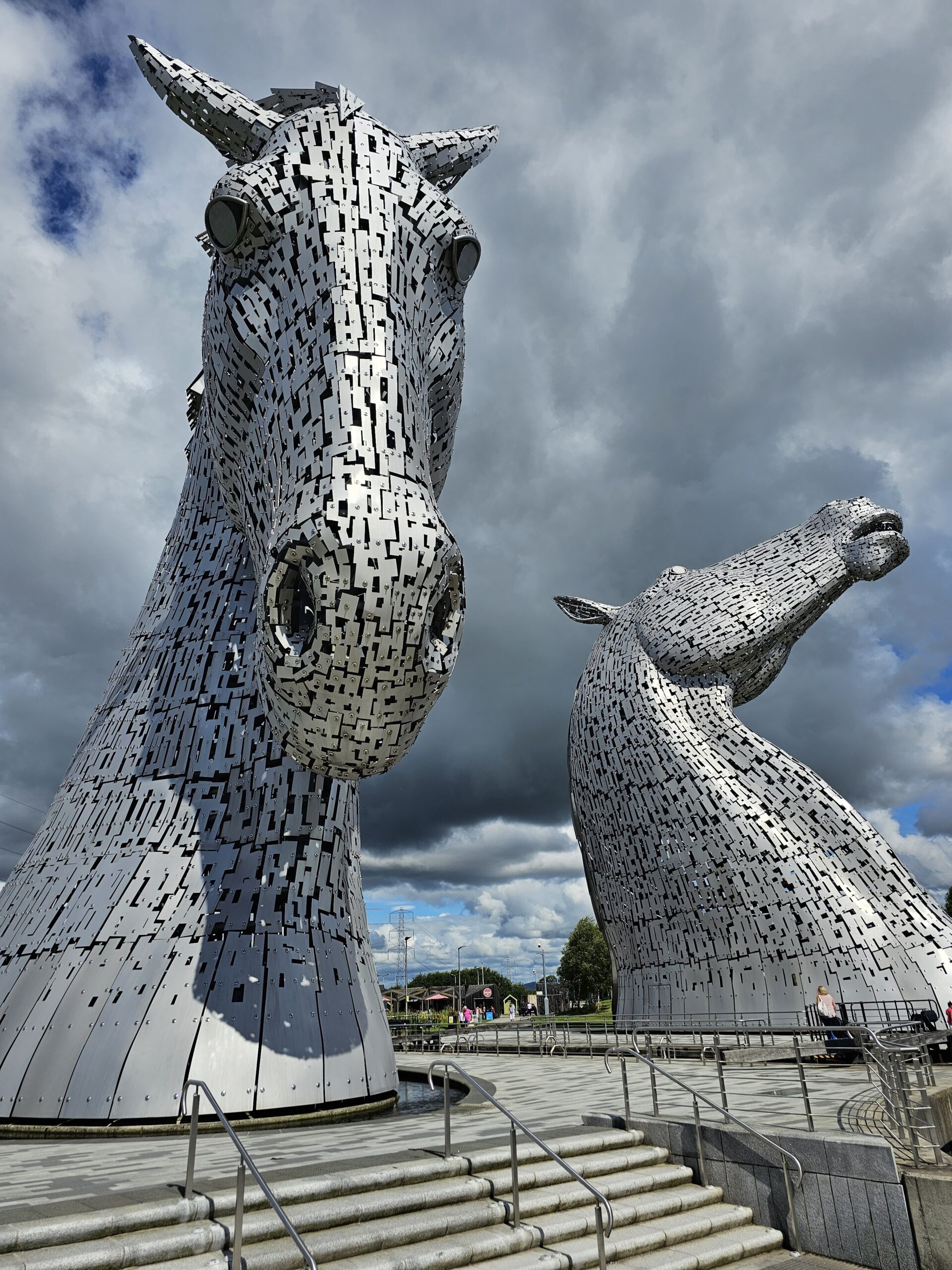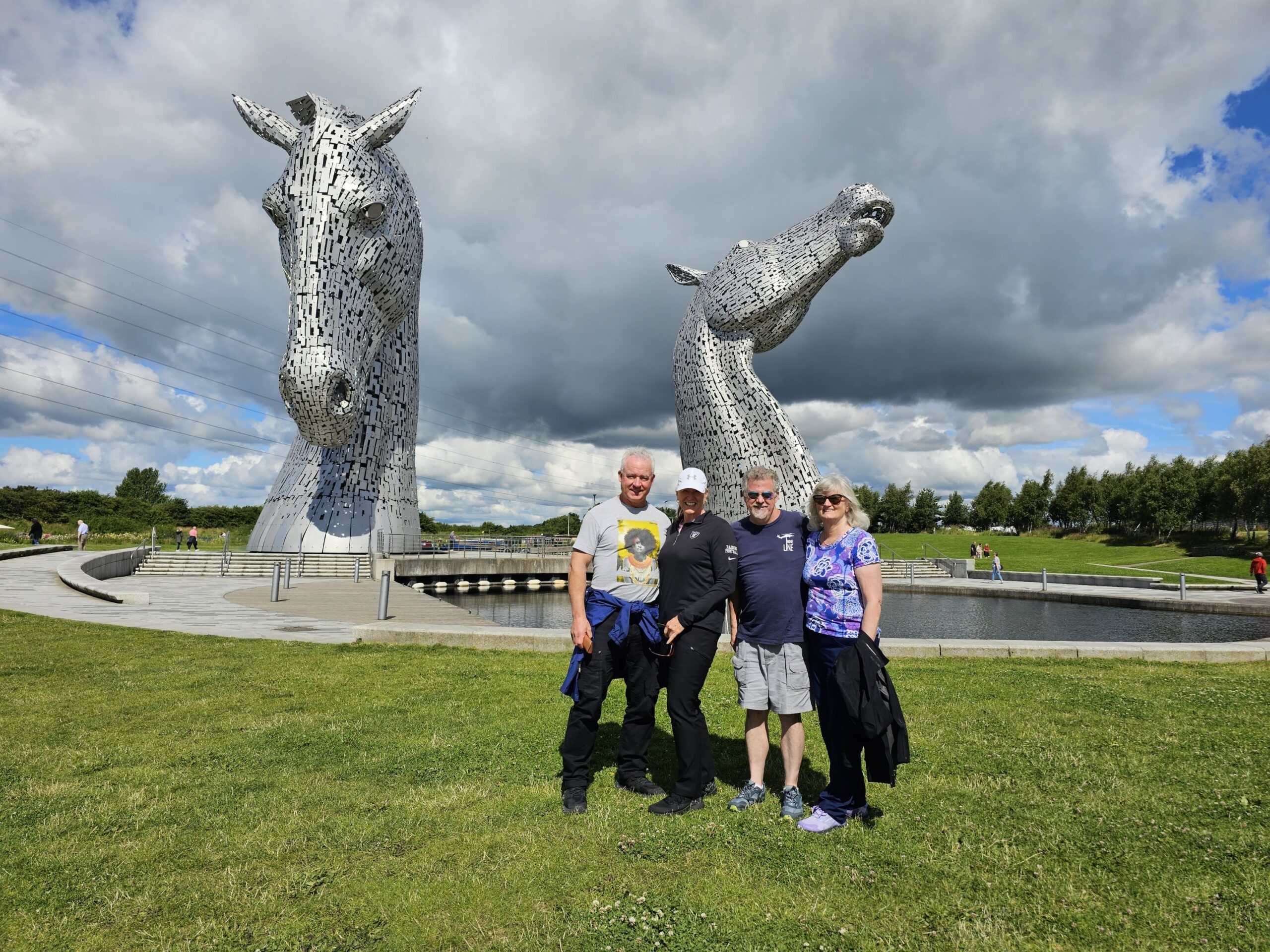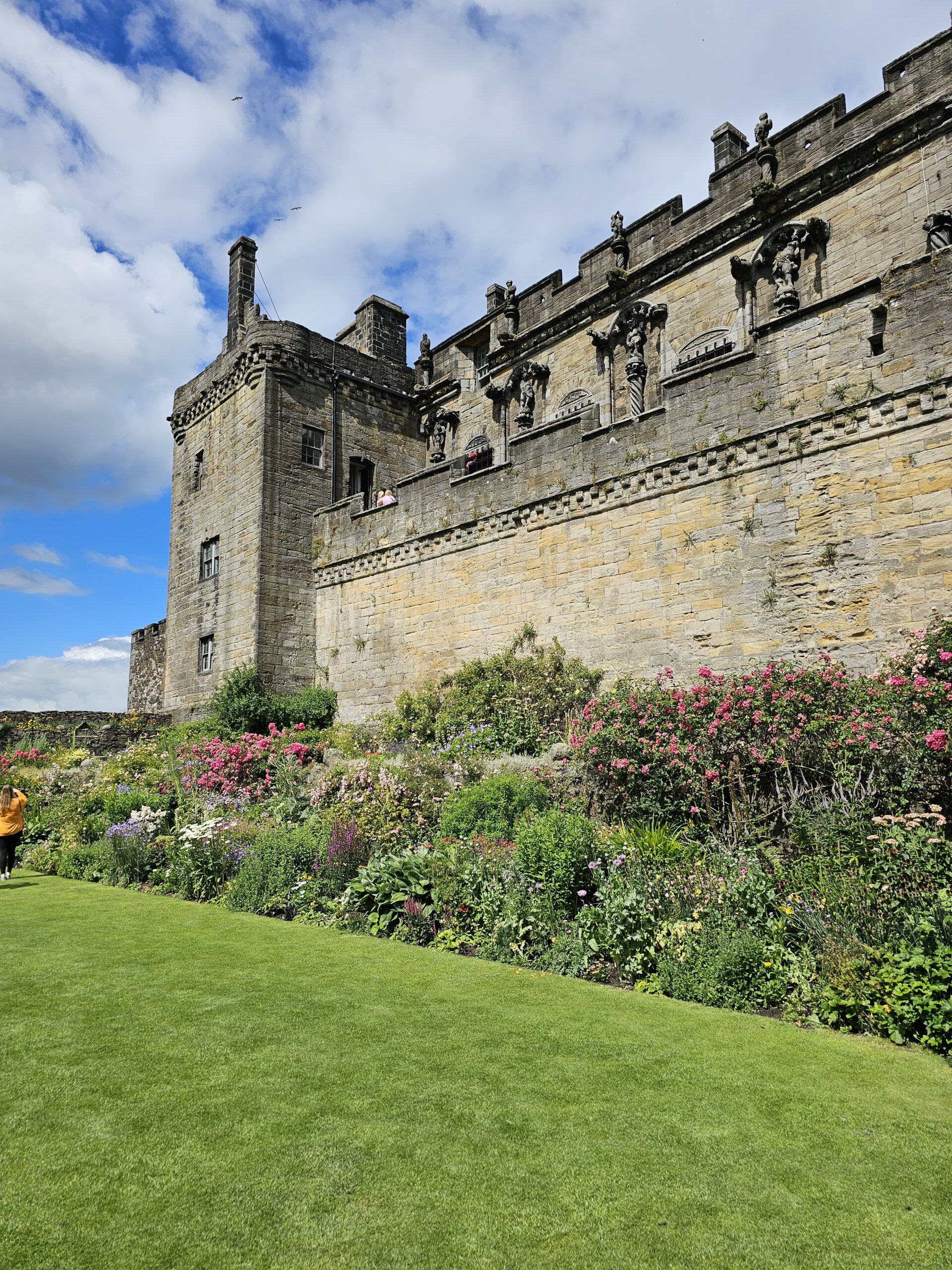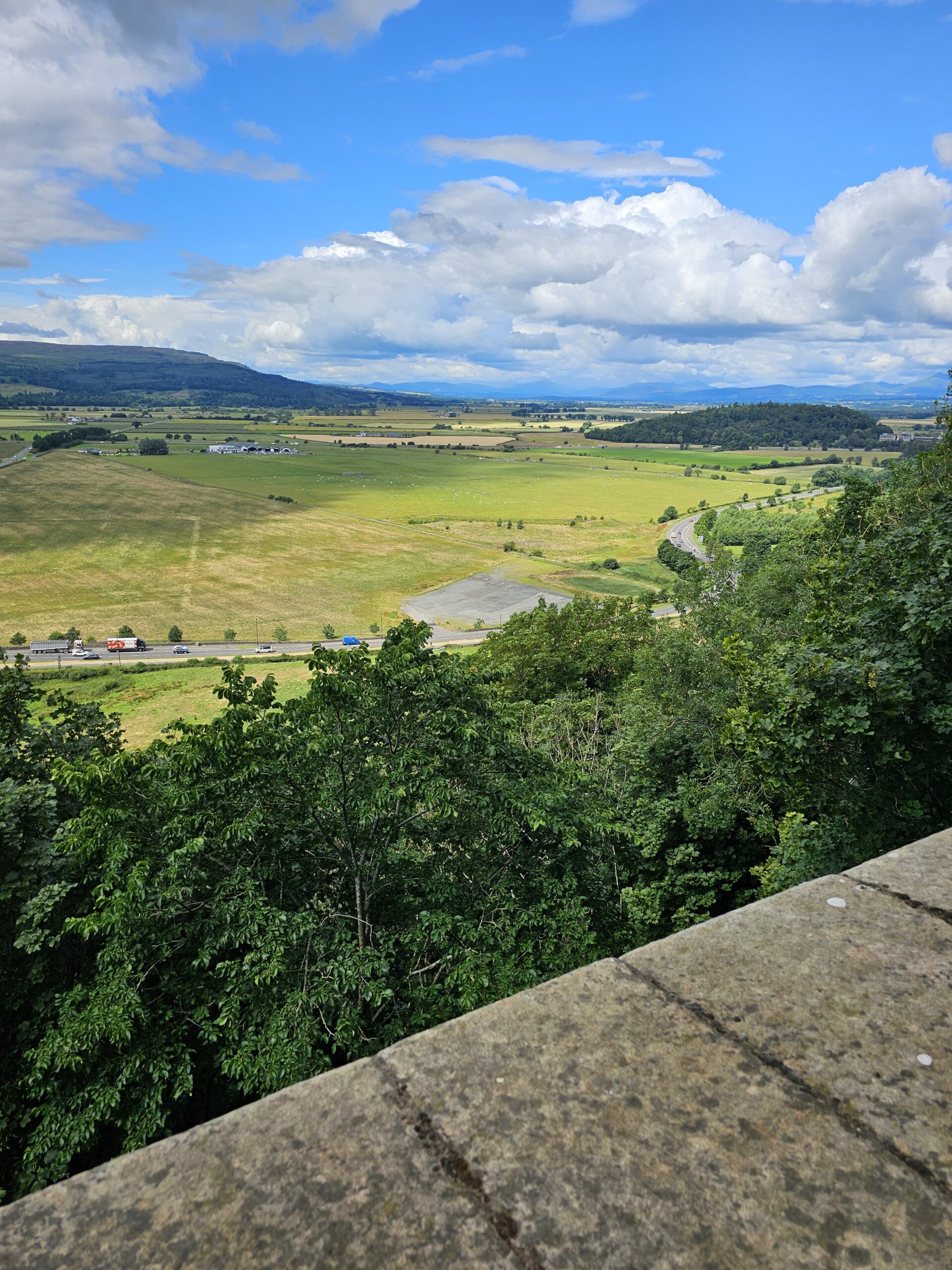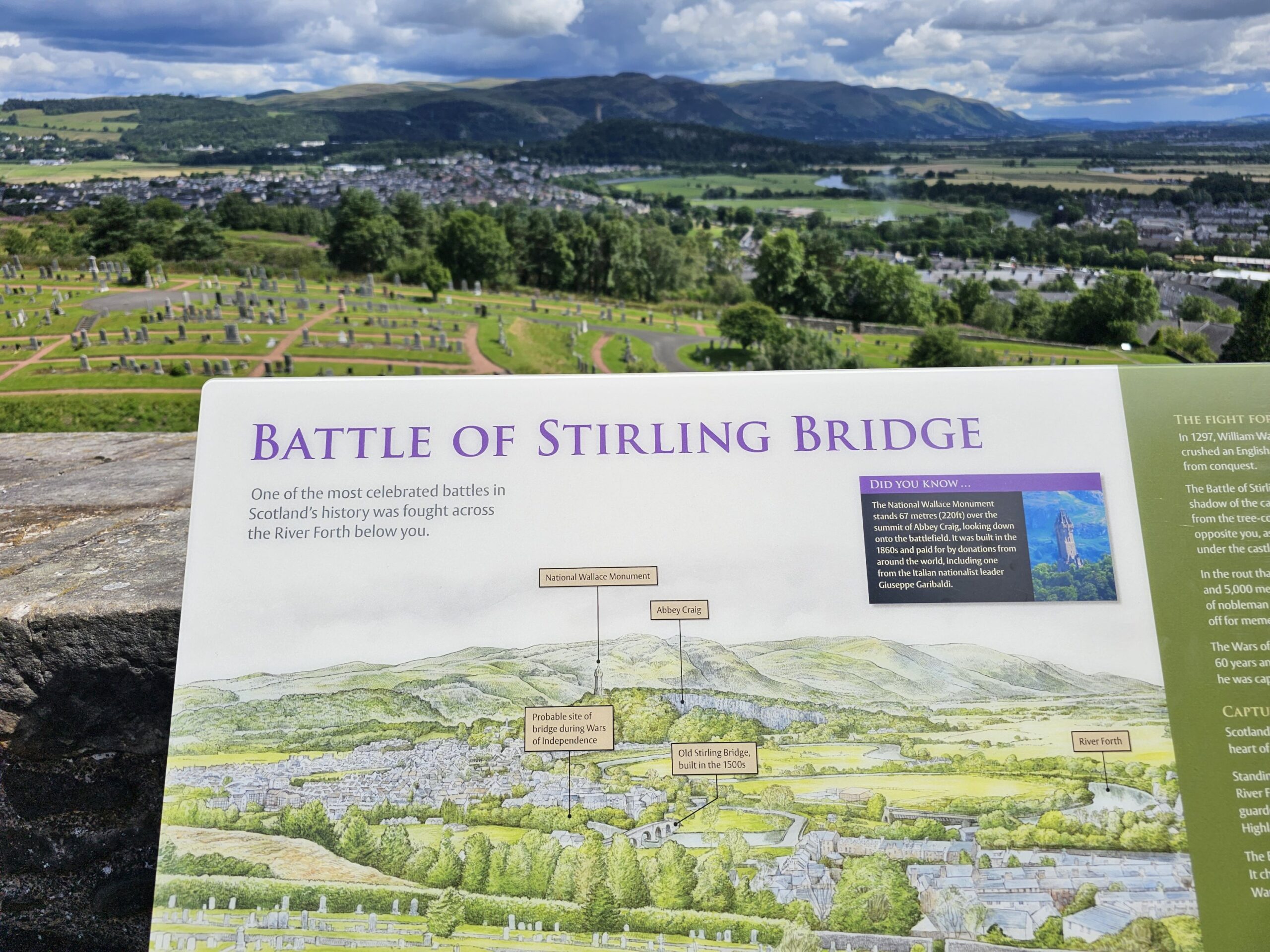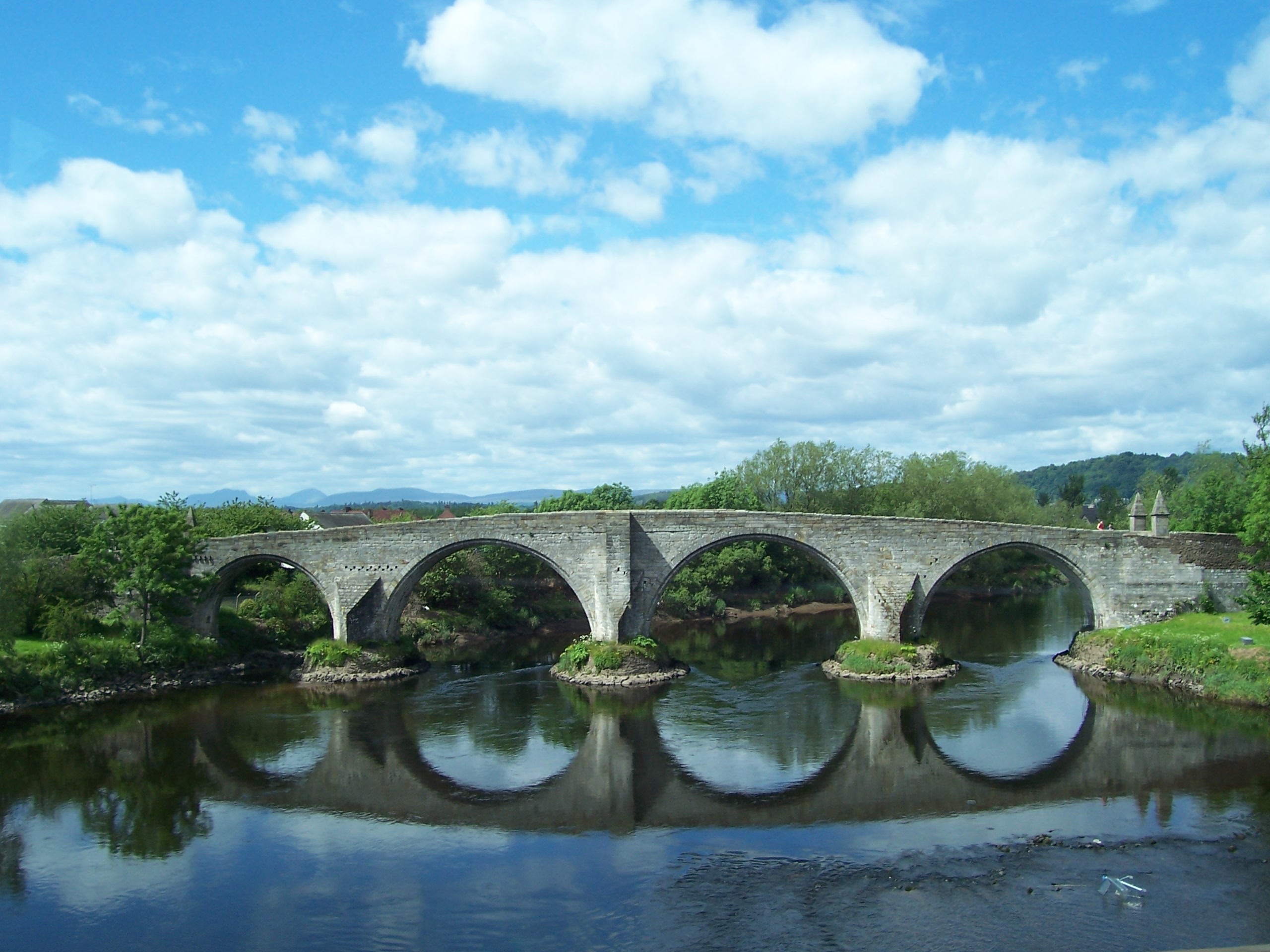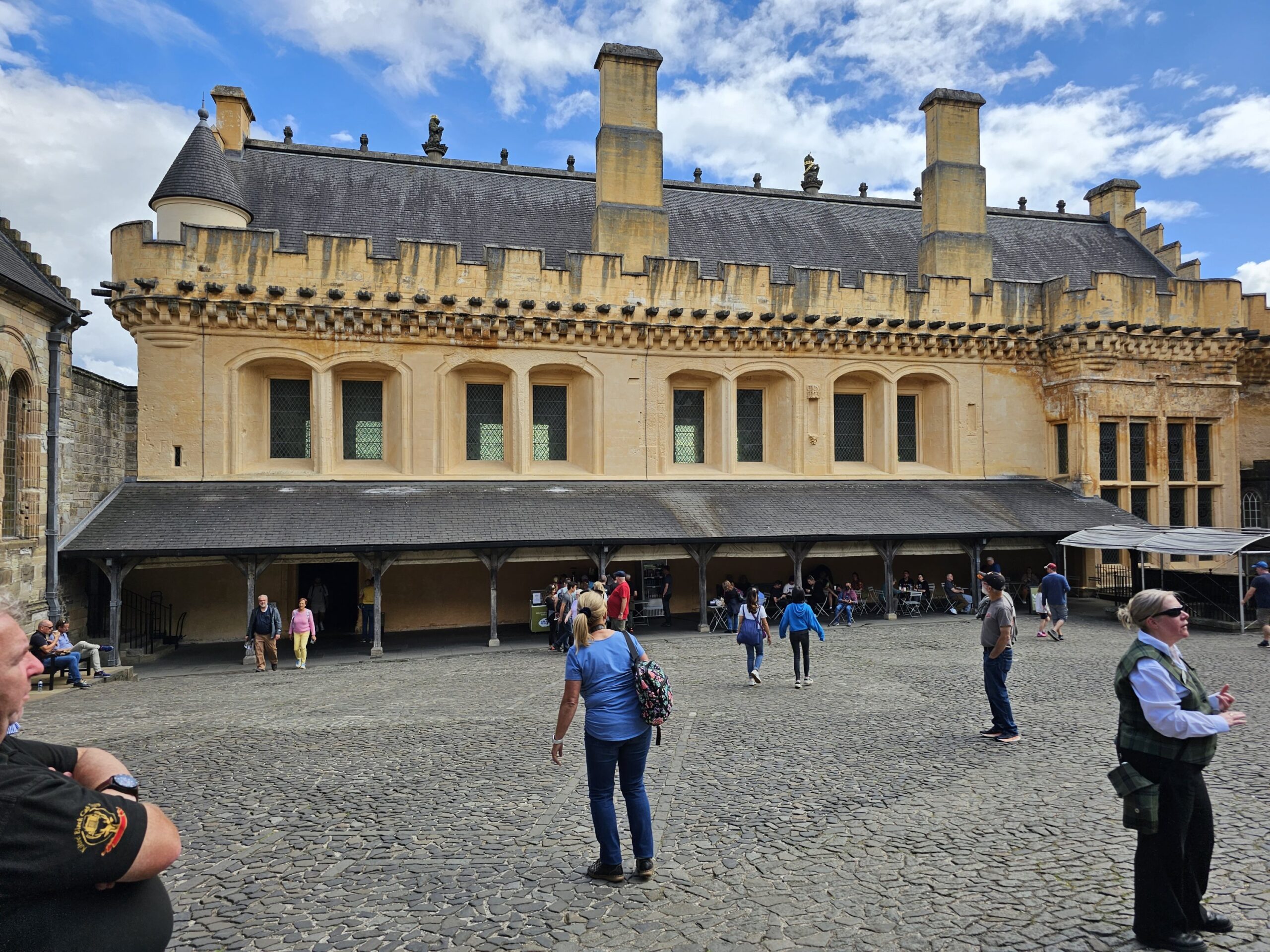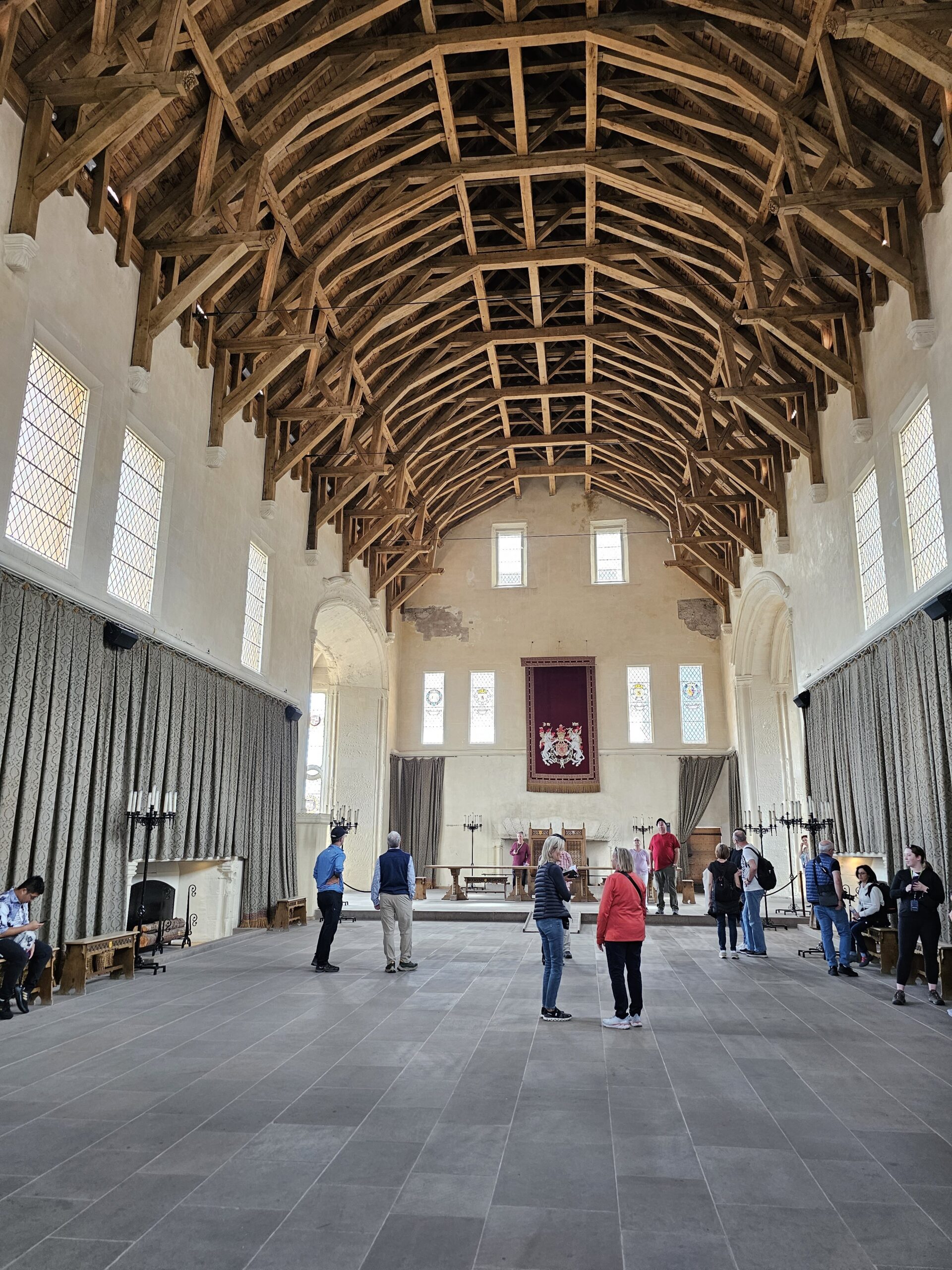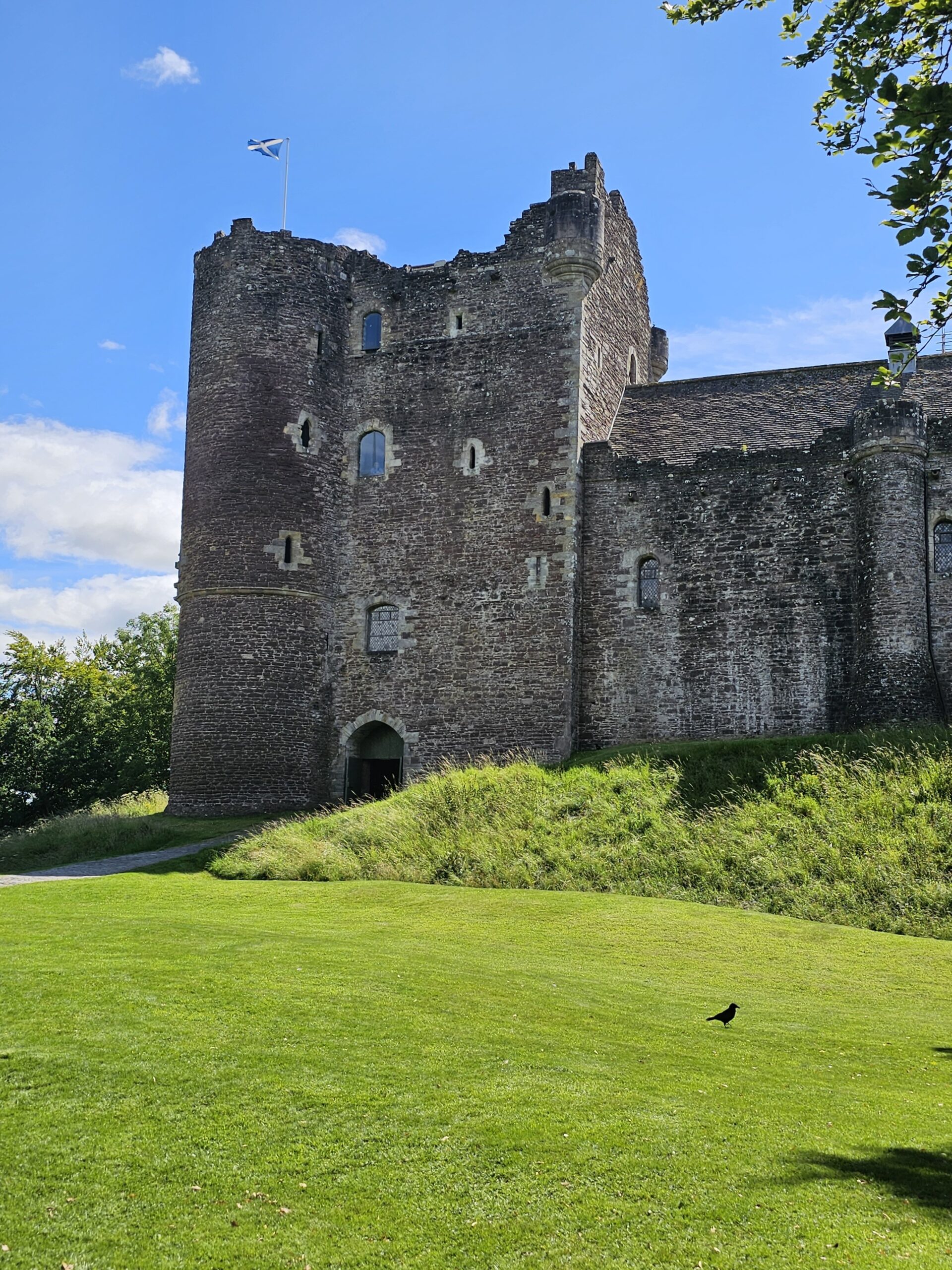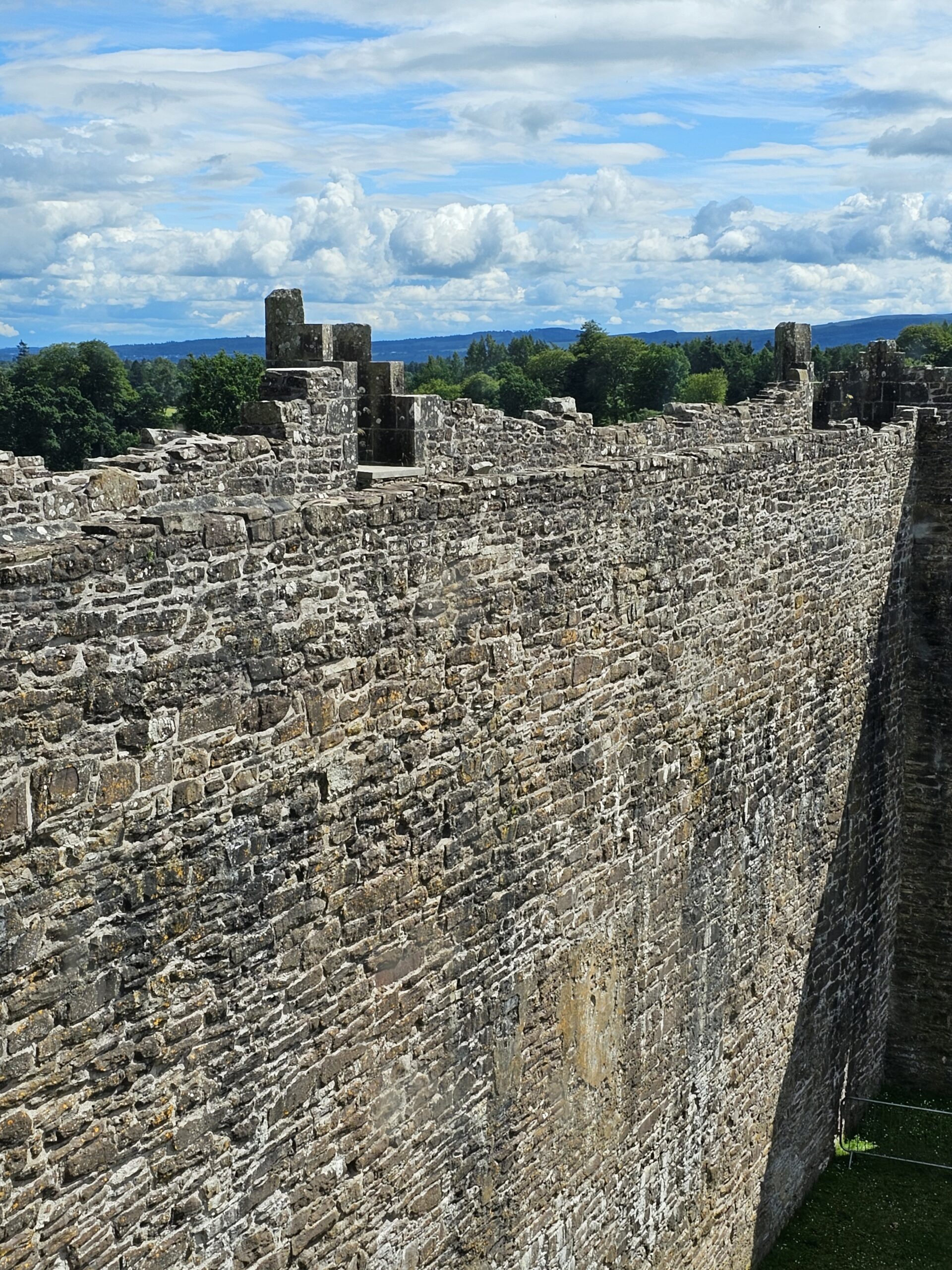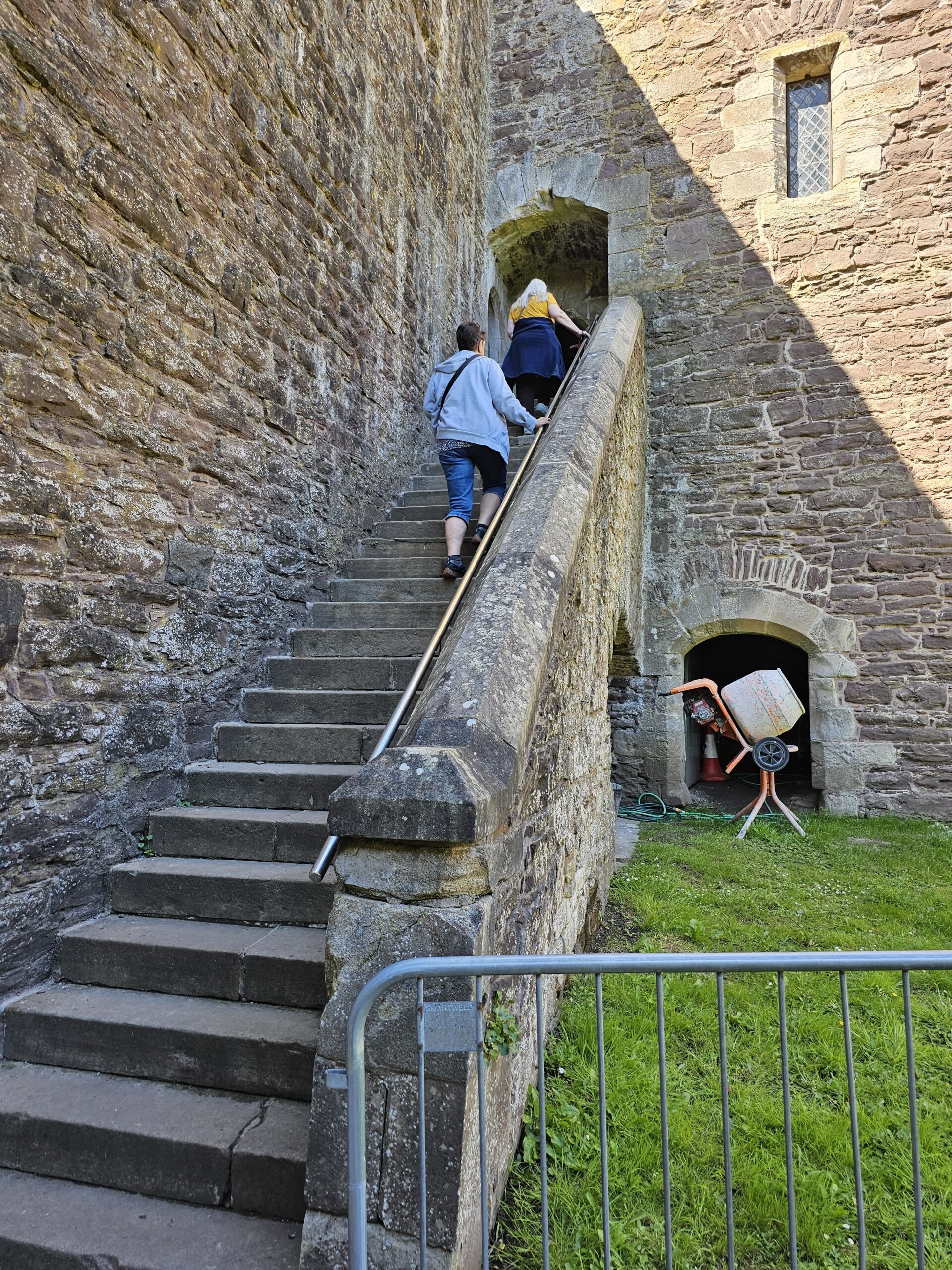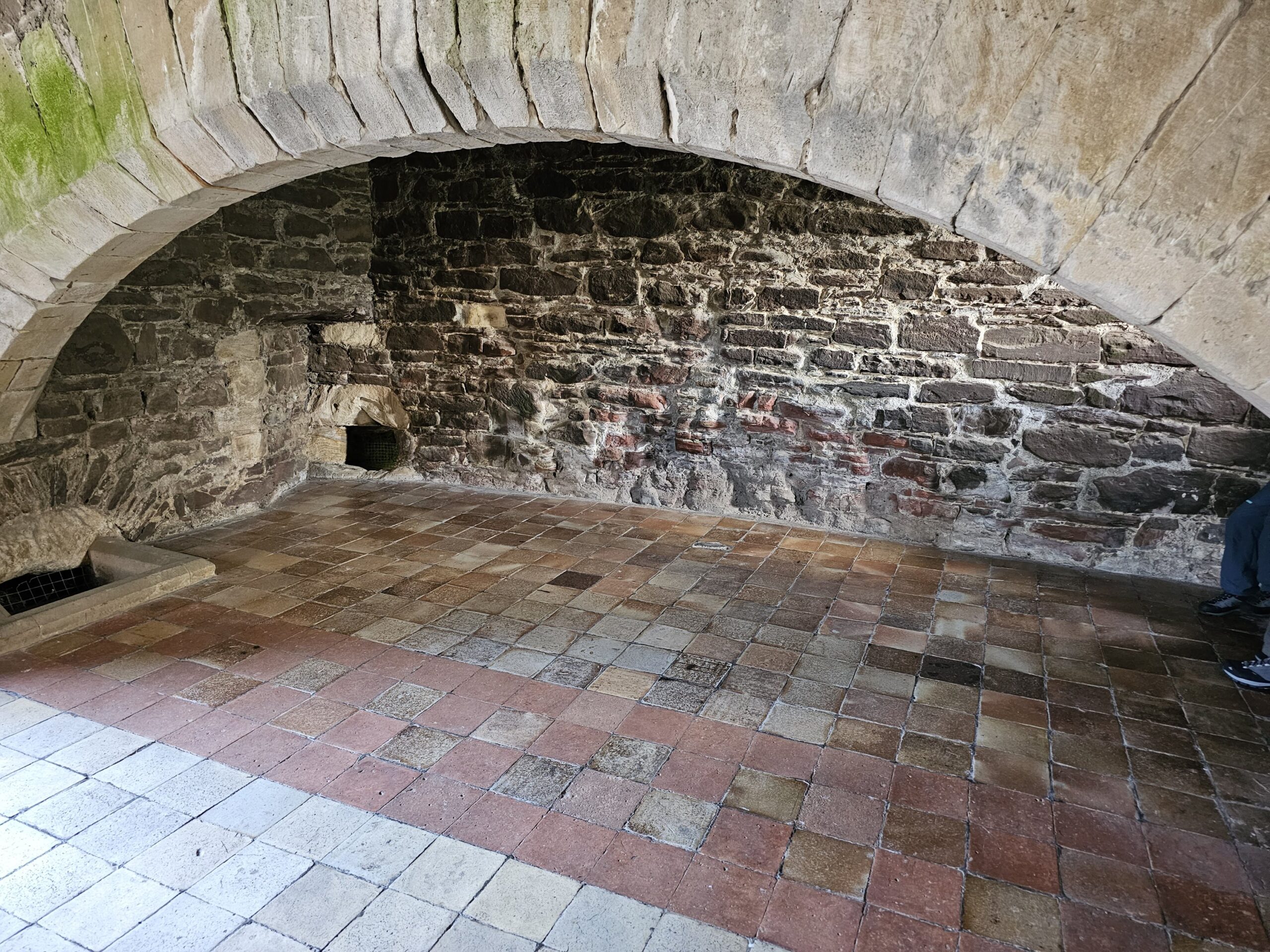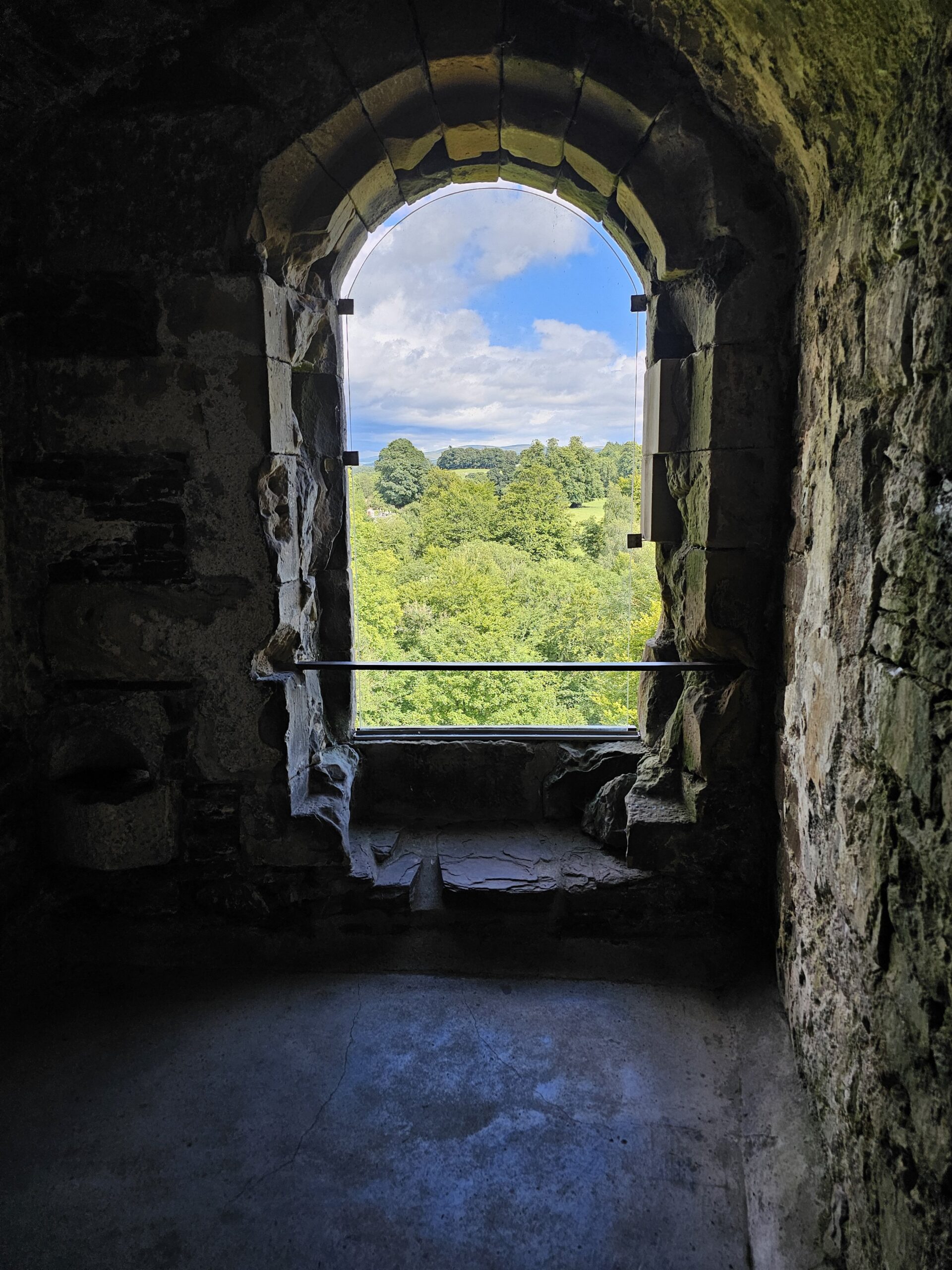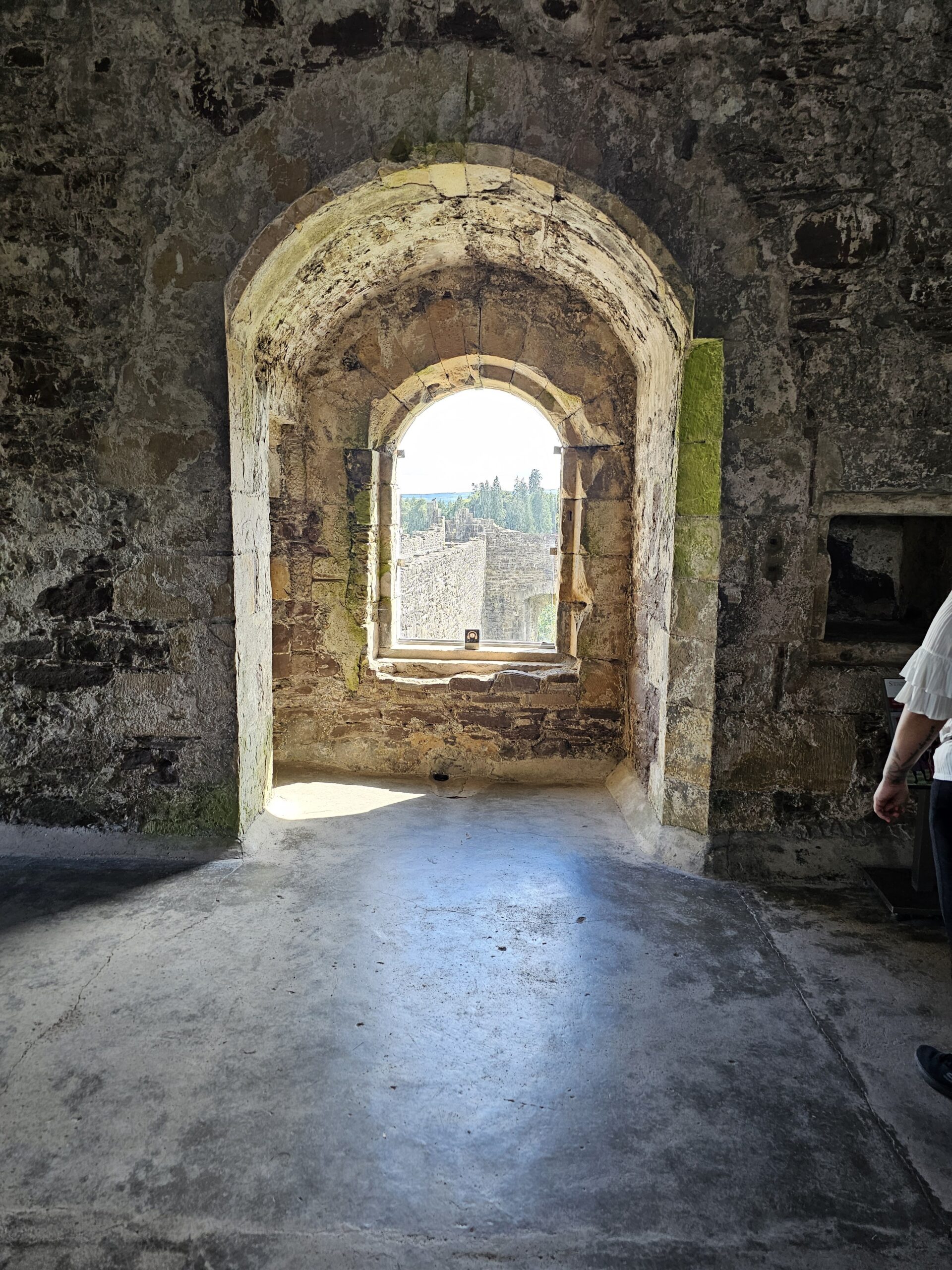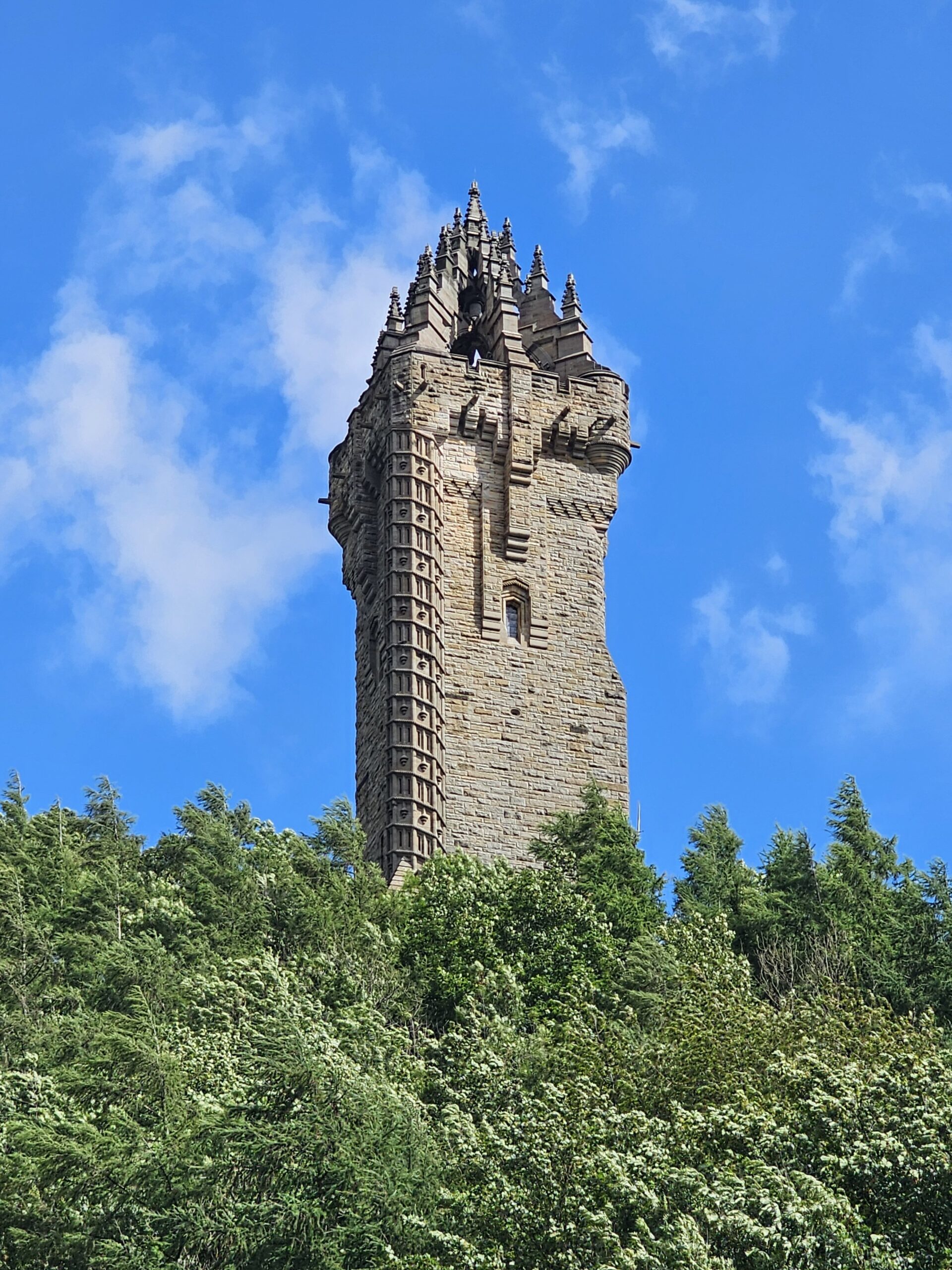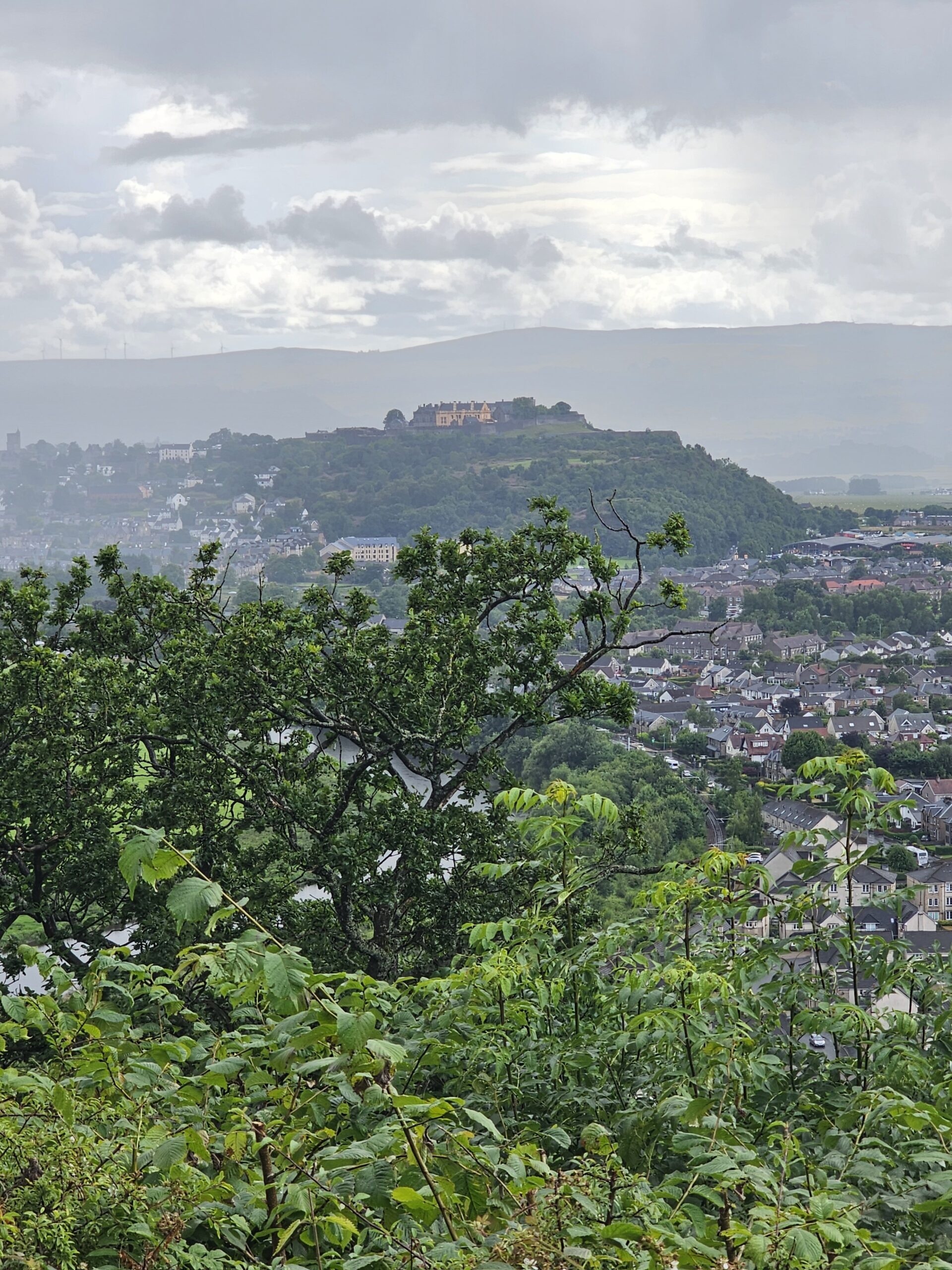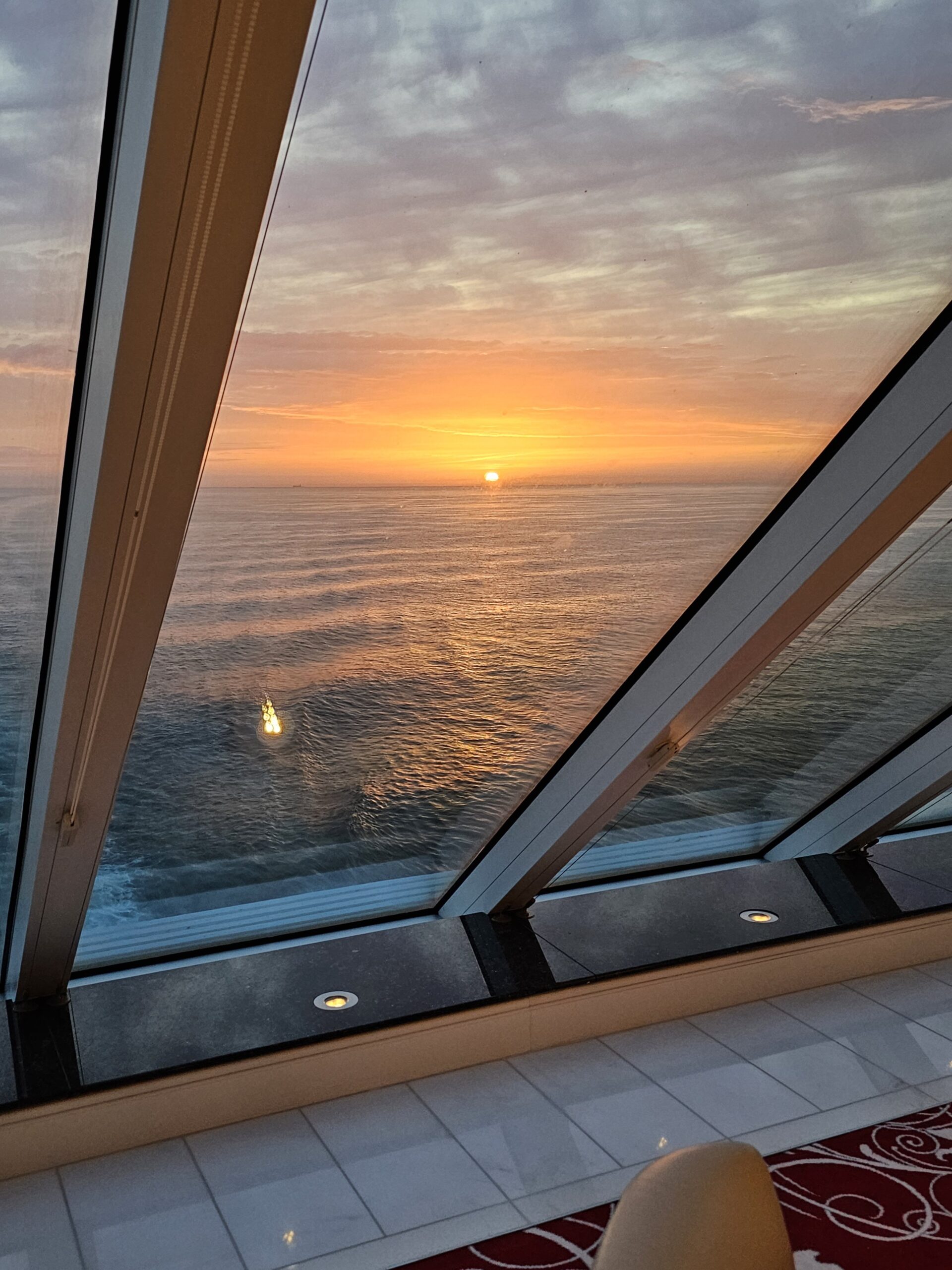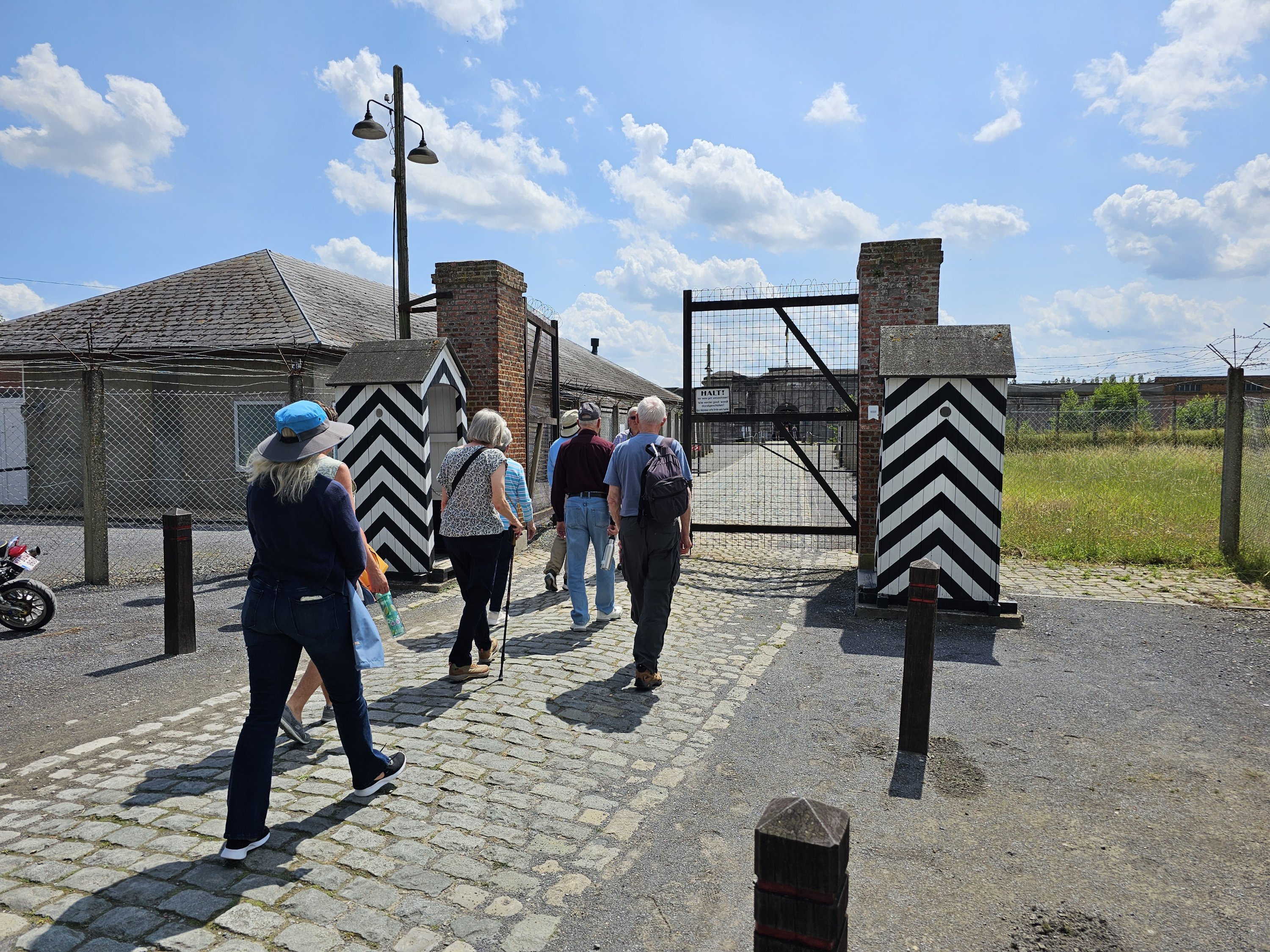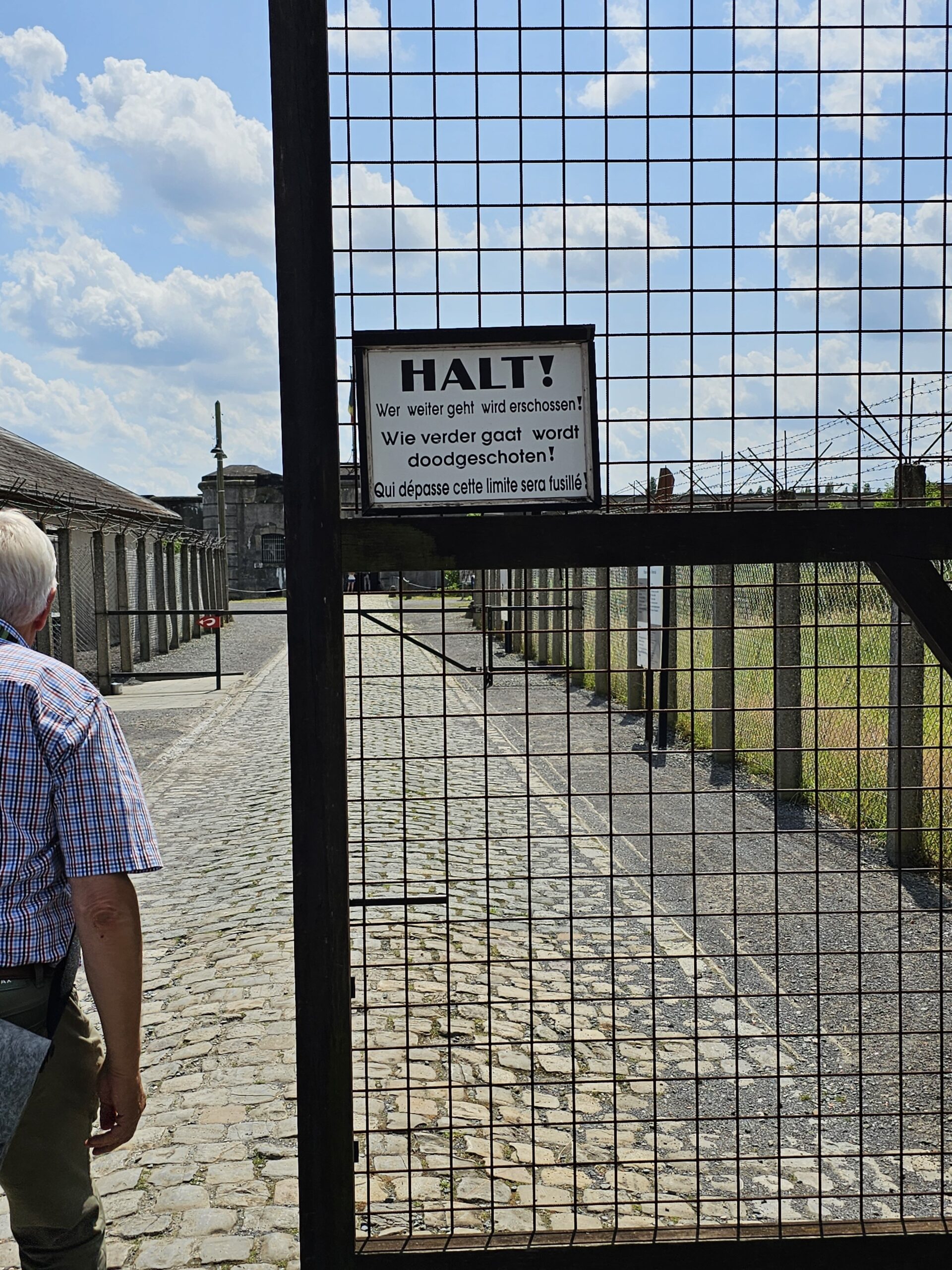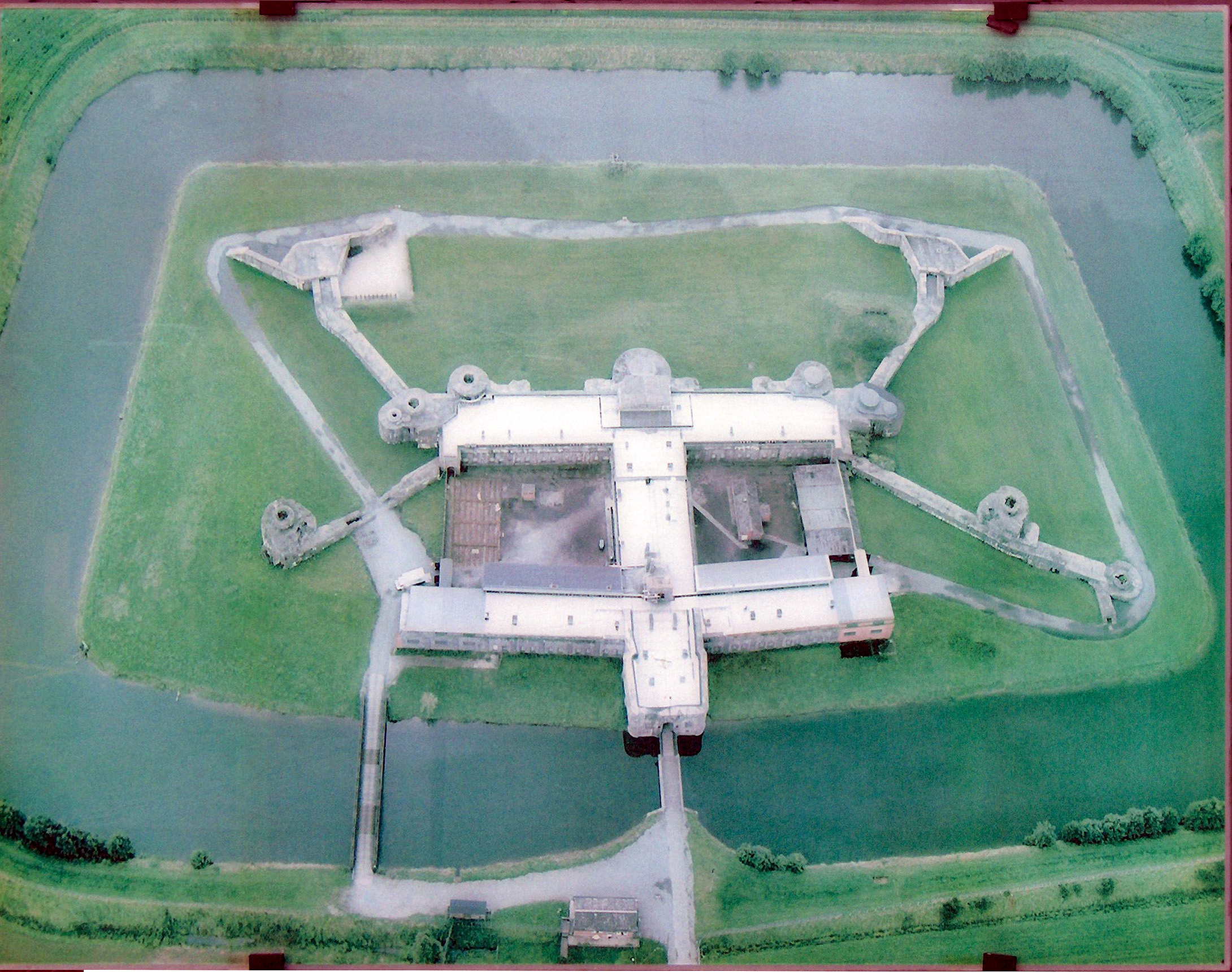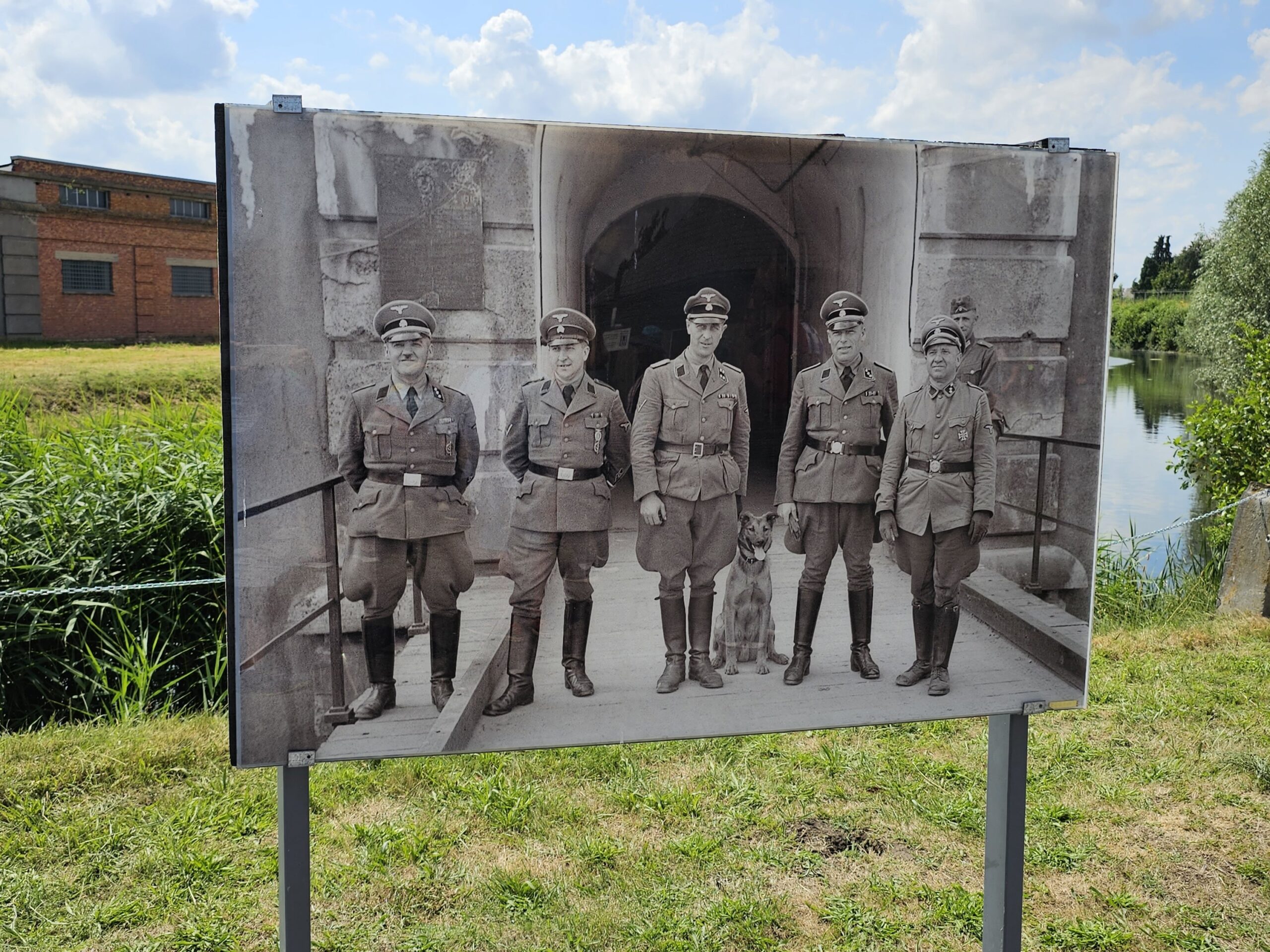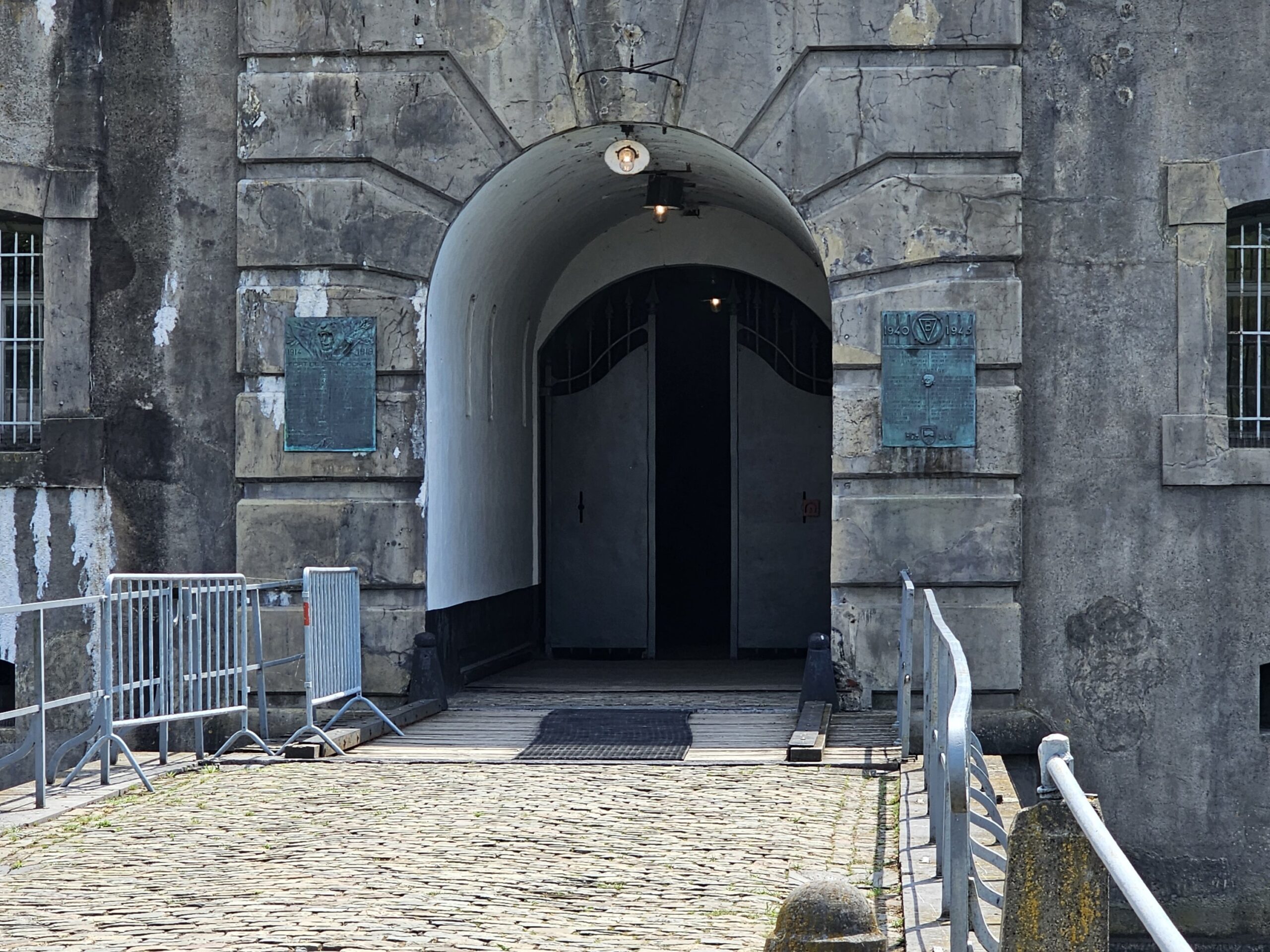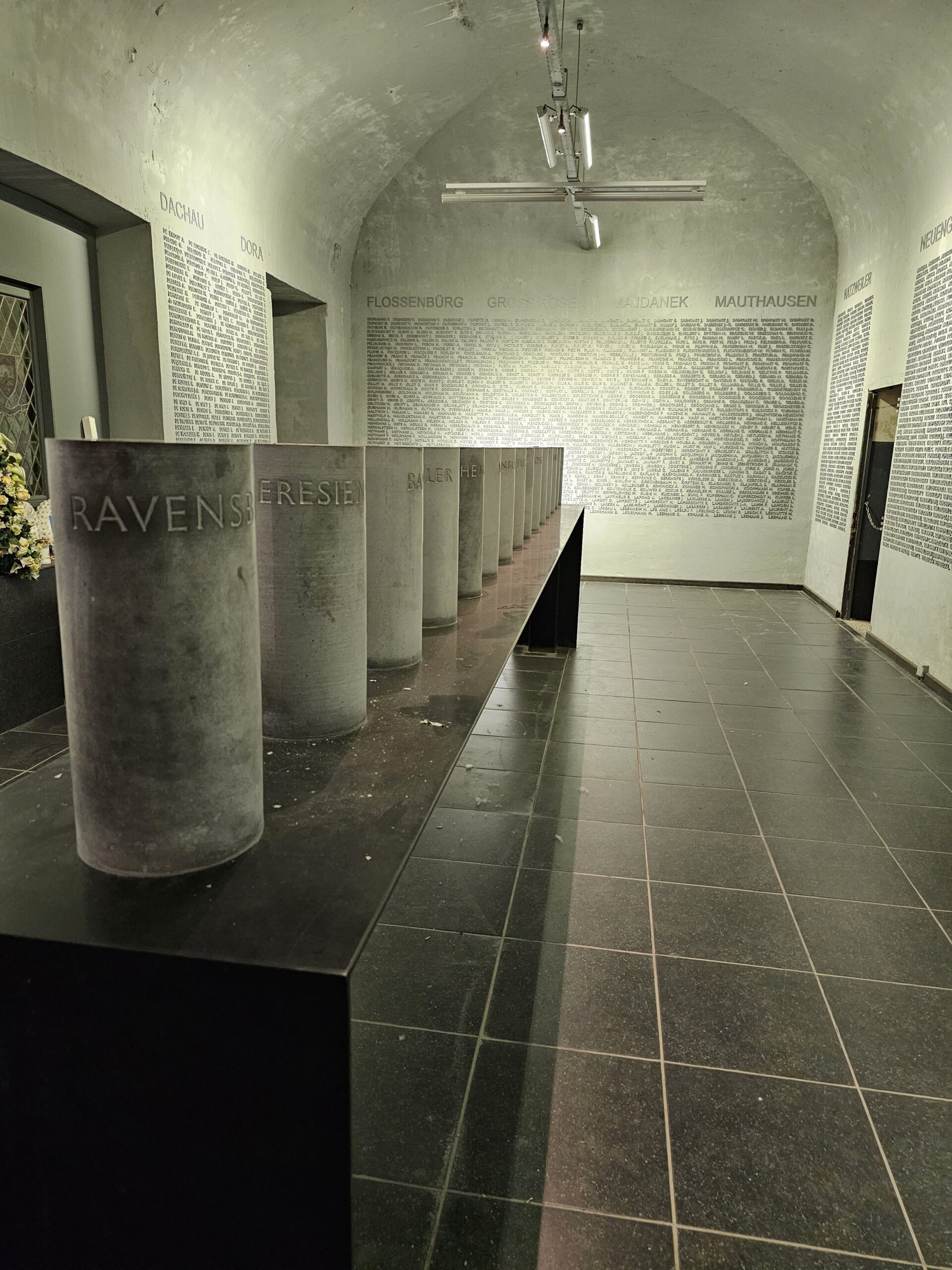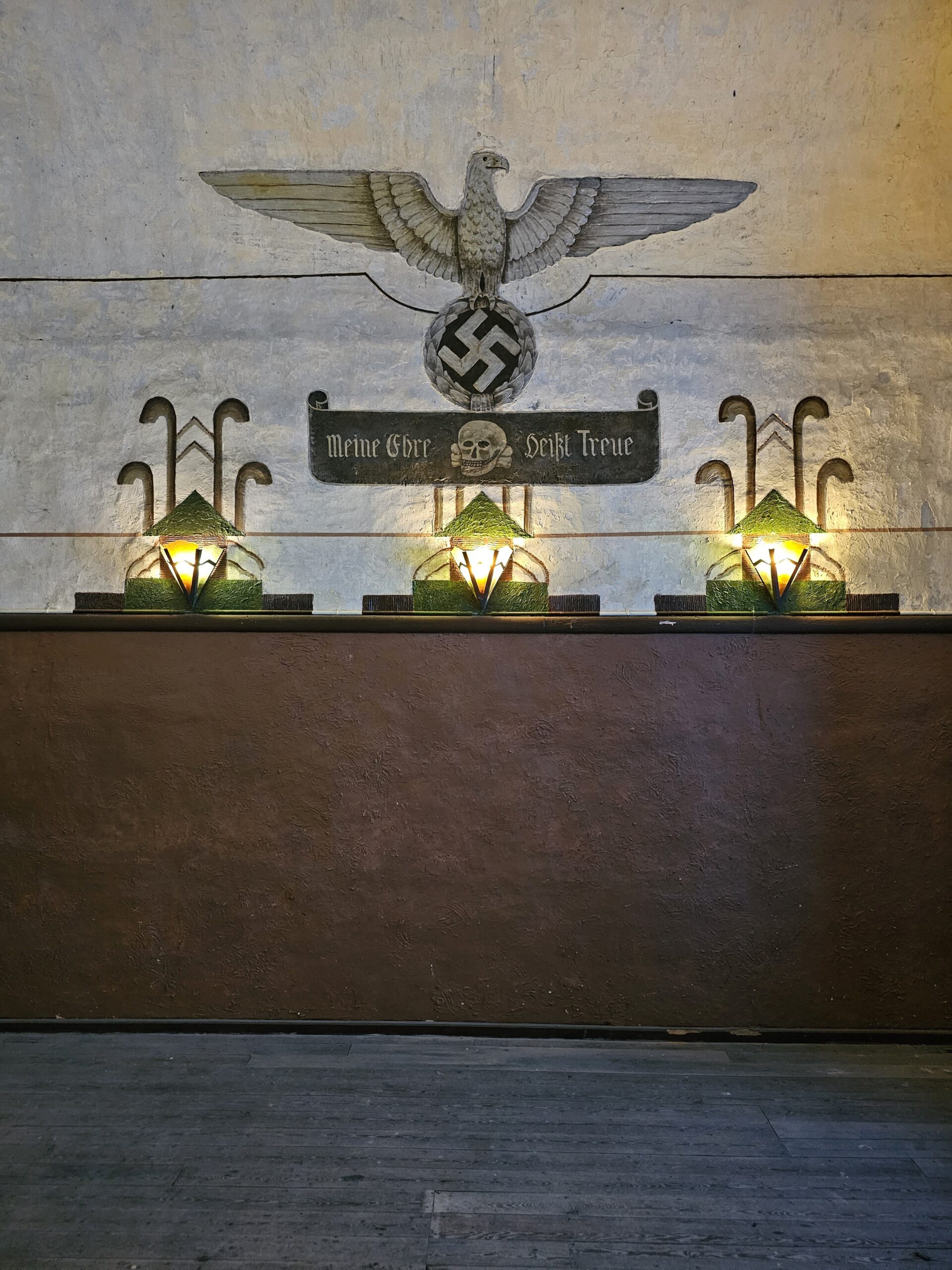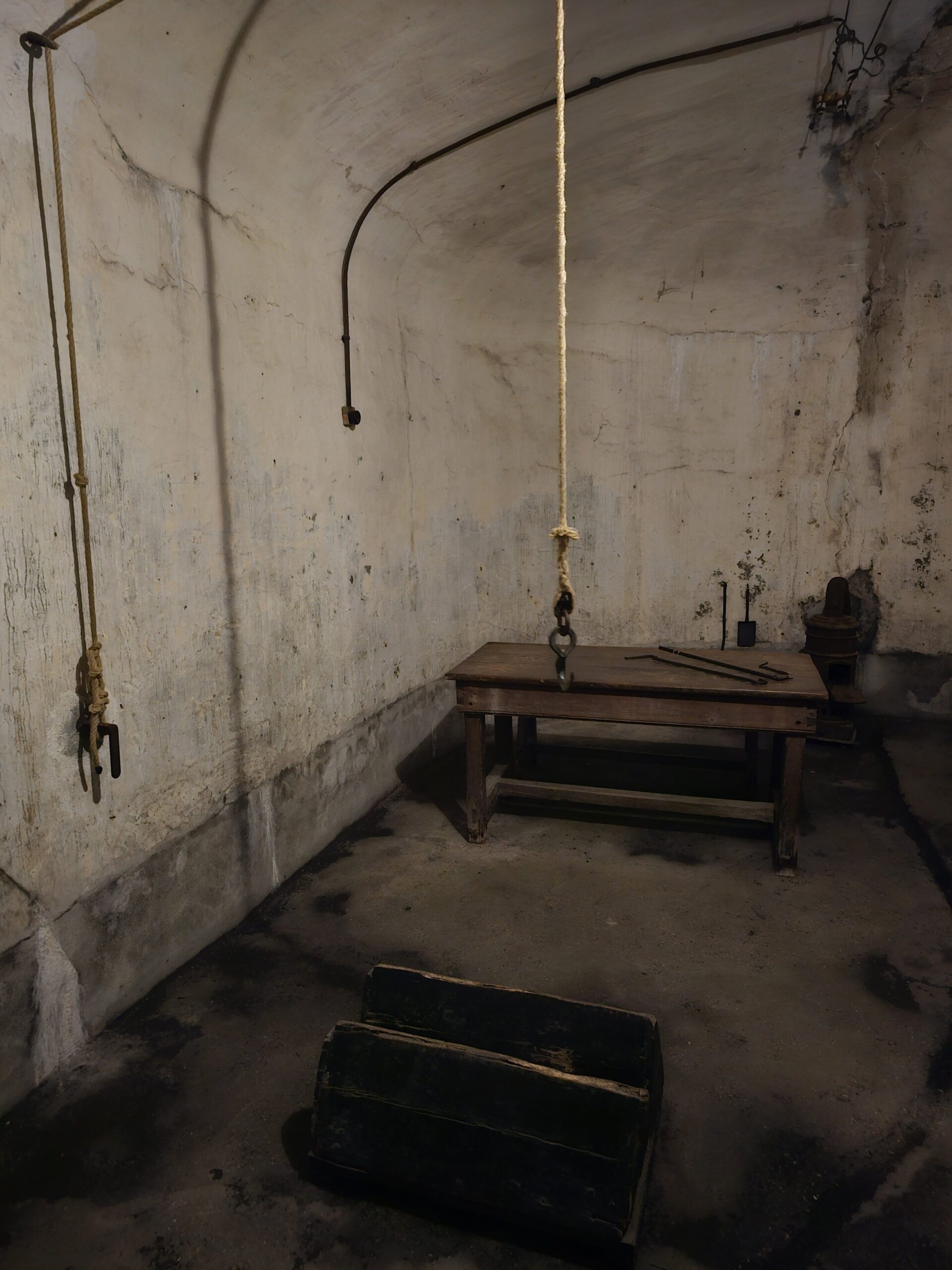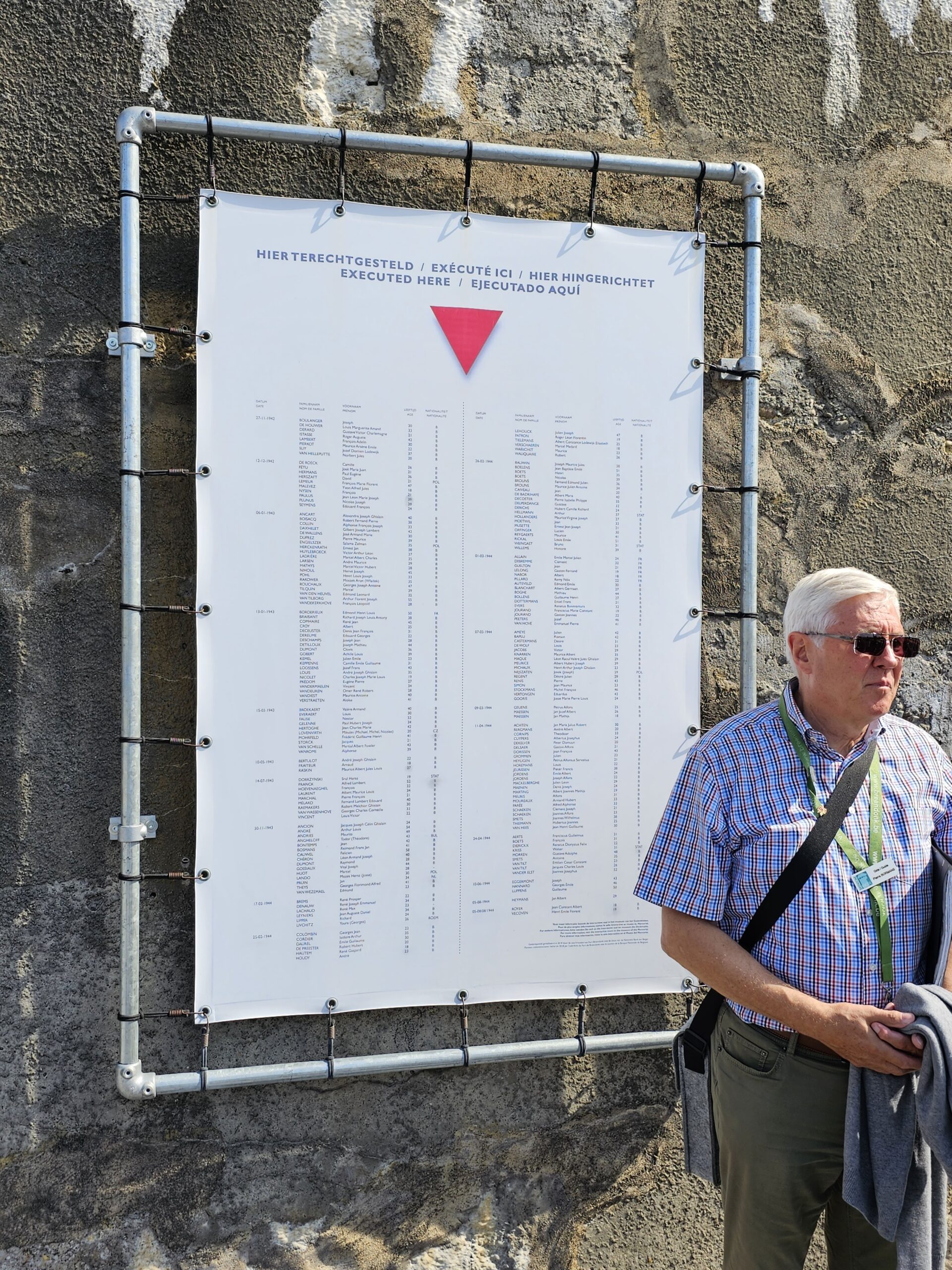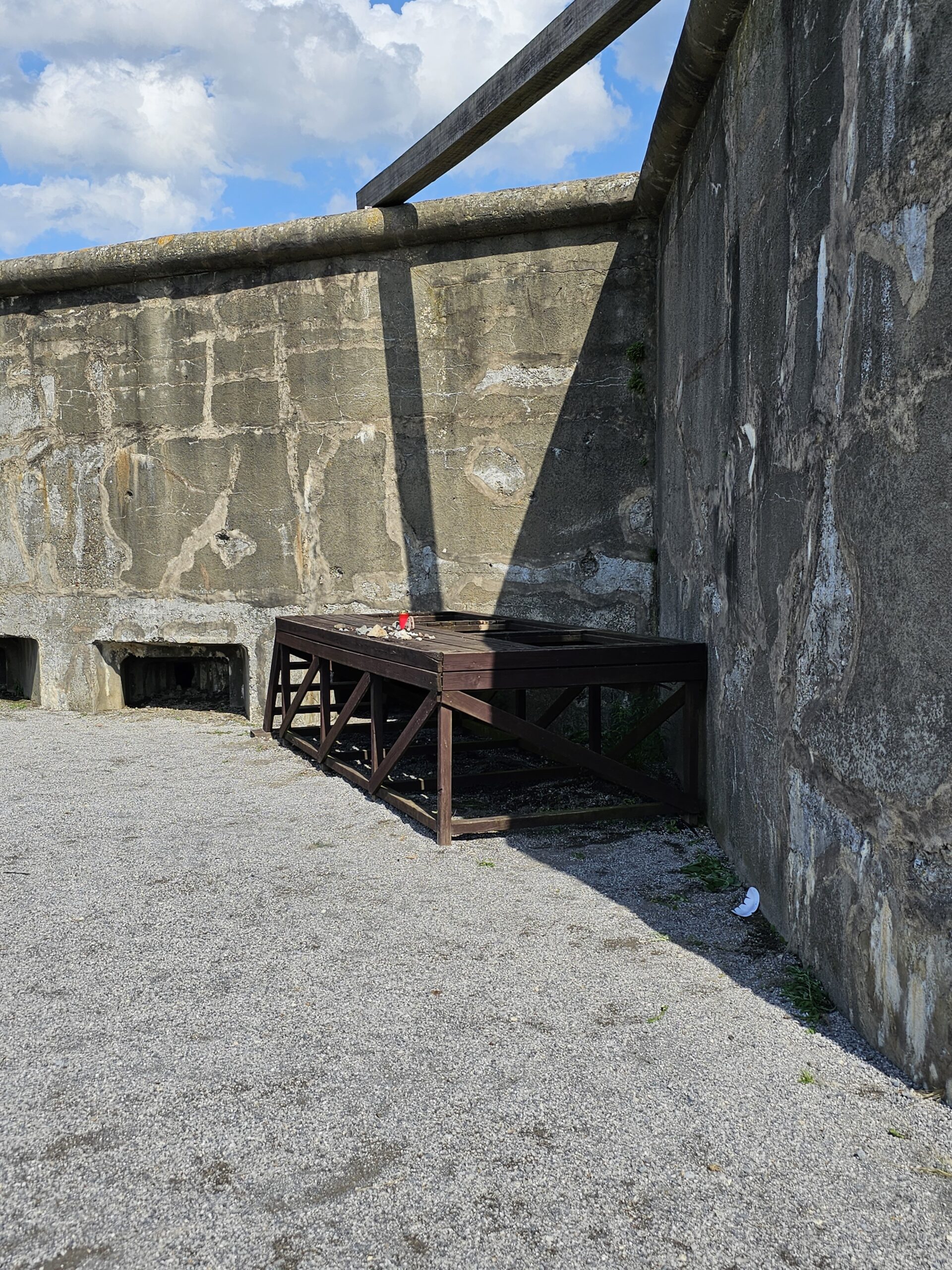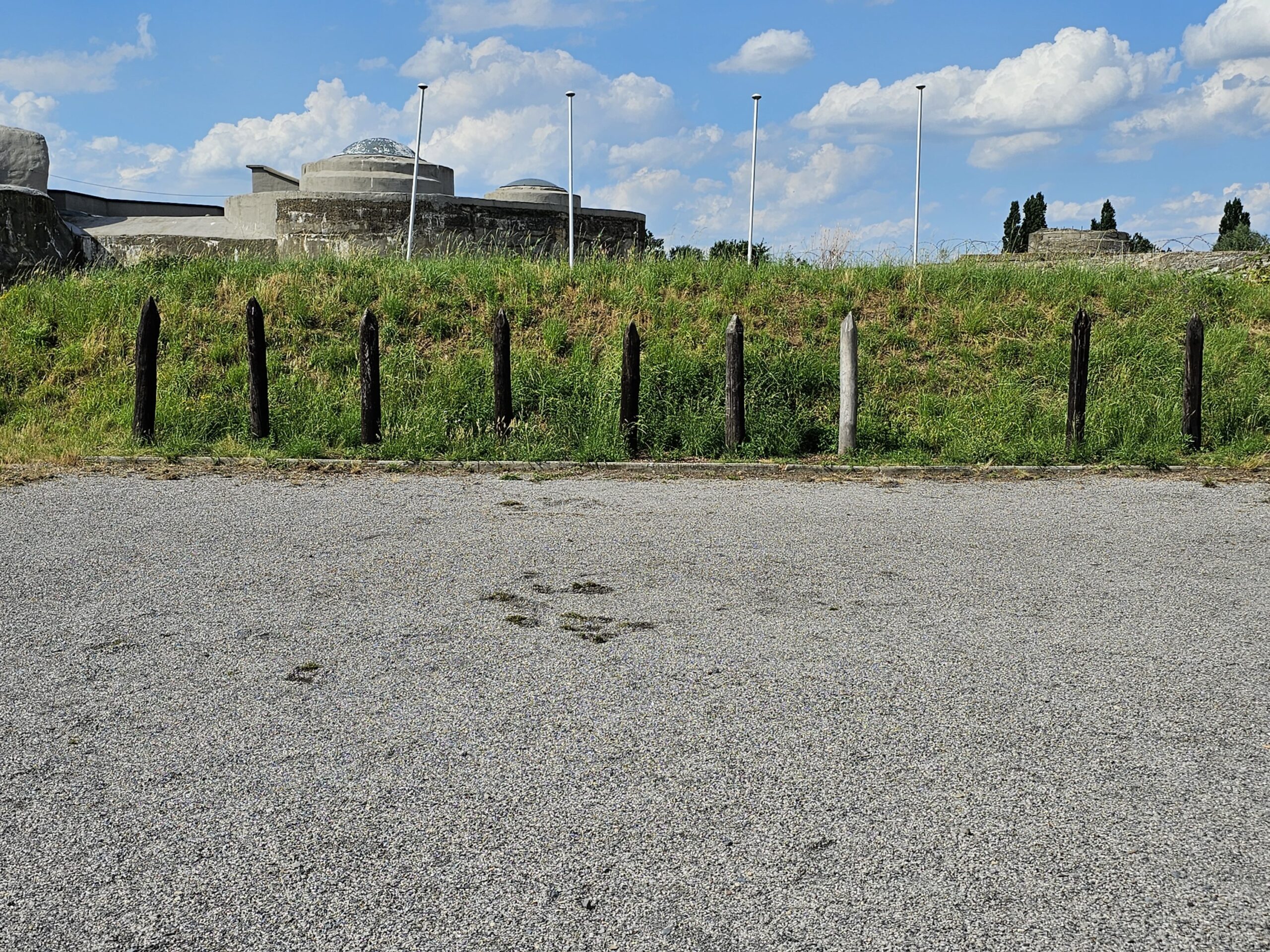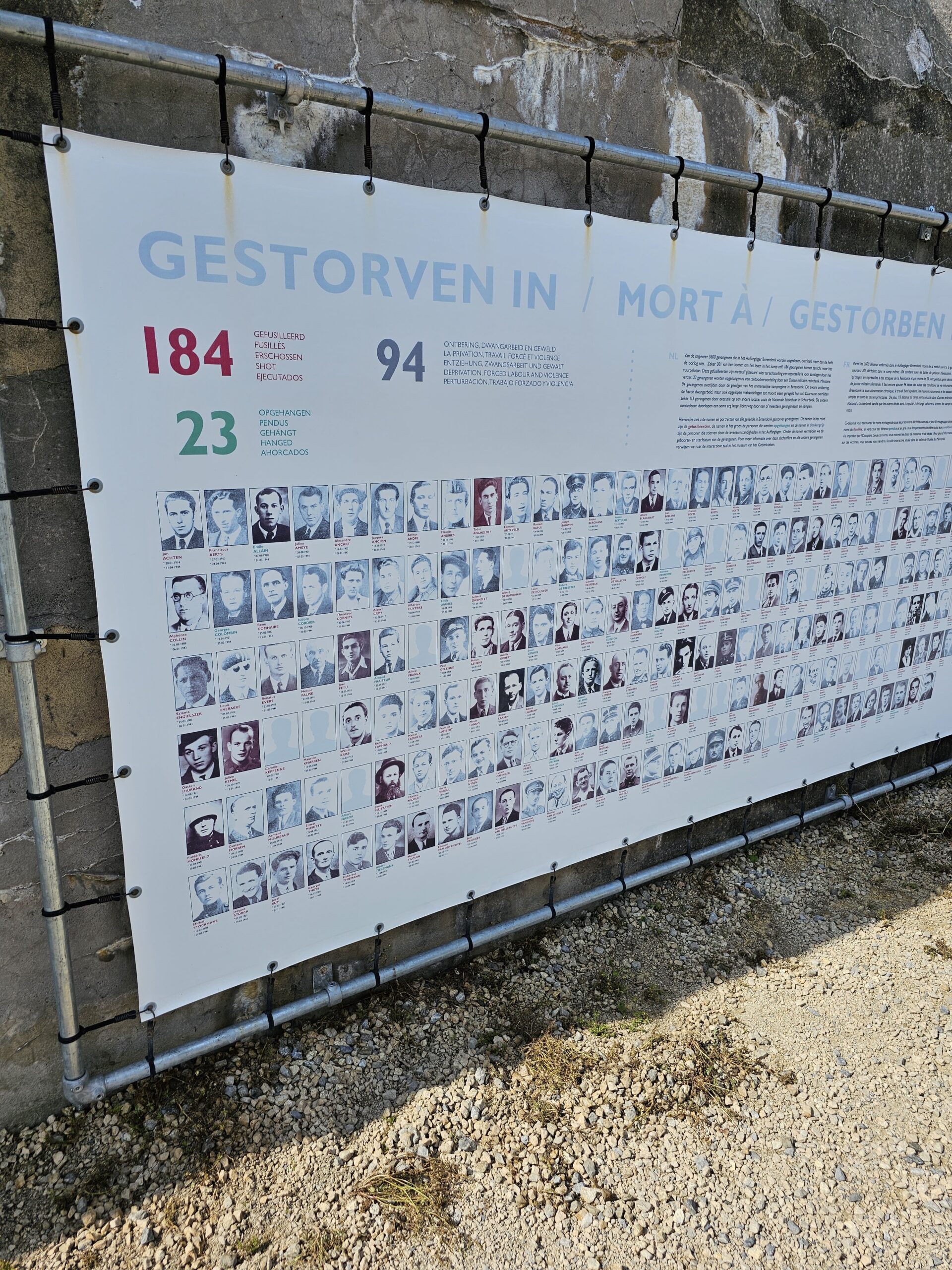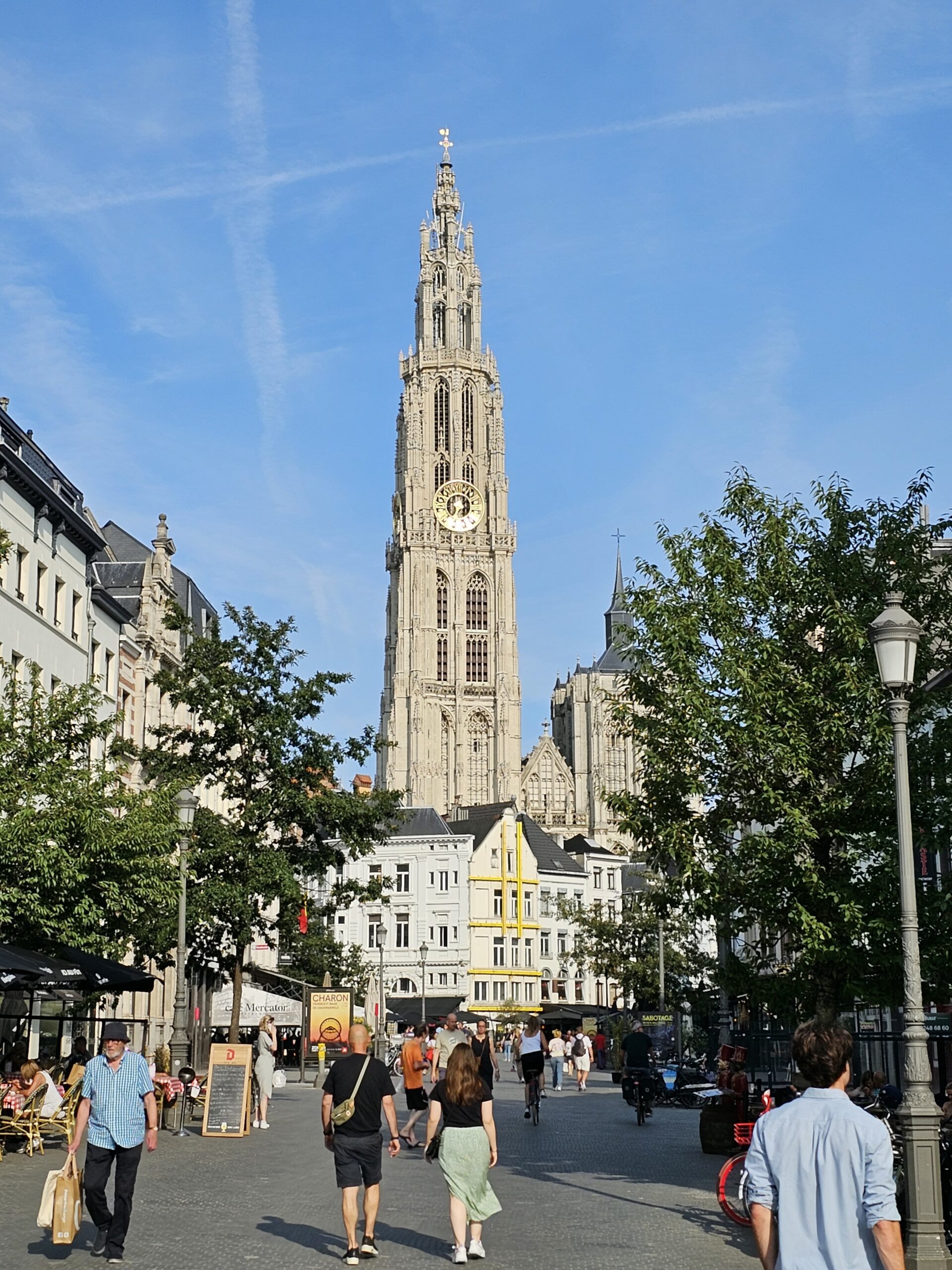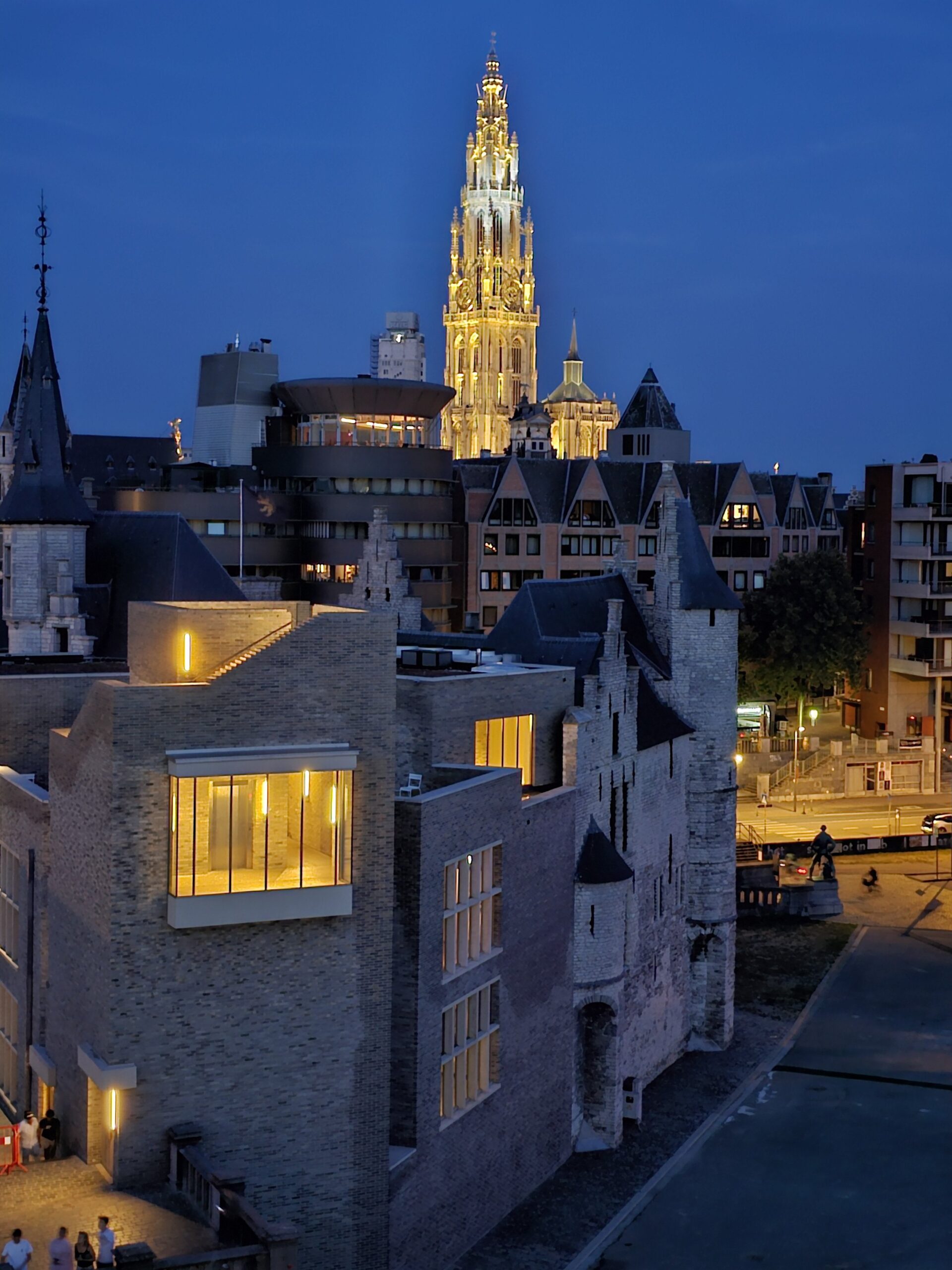Our ship anchored out at South Queensferry, Scotland, about a half hour west of Edinburgh. That’s our ship, the Riviera, from the tender.
We were in Edinburgh last fall with our friends William and Myra, so we skipped the big city and visited some sites we didn’t make during our last trip. I had arranged a tour with “Tours By Locals” for us as well as Tony and Julie, who have also seen Edinburgh previously. Our tour guide, John McCluskie, showed up in a kilt, so it made the trip more authentic. Our first stop was The Falkirk Wheel.
The Falkirk Wheel is a super cool boat lift that opened in 2002. It connects the “Forth and Clyde Canal” with the “Union Canal”. The canals had not been connected since the 1930’s, when a series of 11 locks were needed to bridge the 115 foot vertical differential between them. The Falkirk Wheel enabled the canal system to once again run all the way from Edinburgh and Glasgow. The entire operation of the wheel takes just 5 minutes. Below is a shot half way through the lifting process. Our guide in his kilt is on the far left.
The wheel nearing completion of the lift. Since the weight in each section of the lift is identical, the entire process is said to use the same electricity as it takes to boil 8 kettles of water.
We then visited The Kelpies, not far from the Wheel. These giant sculptures were opened in April 2014. We actually saw these from the freeway last fall, wondering what in the hell they were, so it was nice to see them up close.
The clouds made for some dramatic photos. These 98 foot tall sculptures are supposed to depict “kelpies”, which are shape-shifting water spirits. Our guide told us it was more of a testament to the horses that pulled the barges along the canals back when freeways and trucks weren’t readily available.
We had to get a photo in front of them. Very cool spot to visit if you are in the area.
We then ventured to Stirling Castle, one of the largest and most historically important important castles in Scotland. While we waited for a guided tour to start we checked out the garden.
The view from the garden is excellent. There are sheer cliffs on three sides of the castle, which made for an excellent defensive position.
The most famous battle during the First War of Scottish Independence is the Battle of Stirling Bridge, which happened near the castle. On September 11, 1297, the forces of Andrew Moray and William Wallace (depicted in Braveheart) defeated the English, who had been using Stirling Castle as a base. Stirling Castle changed hands numerous times over its history.
The English initially tried to negotiate a surrender by the Scots, and were told by William Wallace “We are not here to make peace but to do battle to defend ourselves and liberate our kingdom. Let them come on and we shall prove this to their very beards!”
Below is a photo of the current Stirling Bridge, which crosses the River Forth. The original bridge was wooden and only wide enough for two horses abrest to cross. The Scots waited while the English slowly crossed and once about 2000 troops were on the north side of the bridge they attacked and wiped them out. The English tried to rush the bridge and overloaded it, sending it crashing into the river. This was a great victory for the Scots, and made William Wallace quite famous.
The most impressive building in Stirling Castle is the Great Hall, completed in 1503. The golden color is meant to convey wealth.
The interior is equally impressive.
Our next stop was Doune Castle. Built in the 14th century, it has been featured in several movies and TV shows. For me the most famous appearance was in Monty Python and the Holy Grail.
The opening scene from the movie was filmed with the French soldier up on this wall.
Here is the scene.
This stairway was used to depict Sir Lancelot storming the Swamp Castle. He kills a guard on this way up the stairs. The guard was played by a tourist who just happened to be visiting the castle the day they were filming. How cool is that?
This room is the kitchen, and the area under the arch is the largest fireplace I have ever seen. They could cook an entire cow on a spit in this fireplace. This room featured in the Holy Grail when Sir Galahad entered Castle Anthrax that was filled with 150 females all vying for his attention.
This window is where the King of Swamp Castle declared to his son “one day lad, all this will be yours”, while pointing out the window, to which is son replies “what, the curtains?” A classic line!
This is the view from the window.
Directly adjacent to that window is this window and passageway. For the movie, the window below was filled in with wood. The below spot is where the King asks two guards to keep his son from leaving the room, and hilarity ensues.
Here is the scene.
Doune Castle has also been featured in the movie Ivanhoe, served as Winterfell in Game of Thrones, and is also apparently featured in the TV series Outlander.
Our final stop was a visit to the William Wallace Monument. Completed in 1869, it was built during a resurgence of Scottish national identity. It’s located on Abbey Craig, the area where the Scots waited out the English crossing Stirling Bridge before their attack.
From the base of the monument you get an excellent view back towards Stirling Castle.
Our next stop is Invergordon, Scotland, where I will finally get to visit Loch Ness, a place I have wanted to see since I was a little kid.
